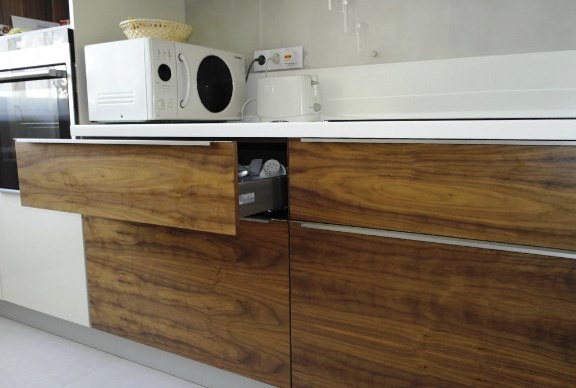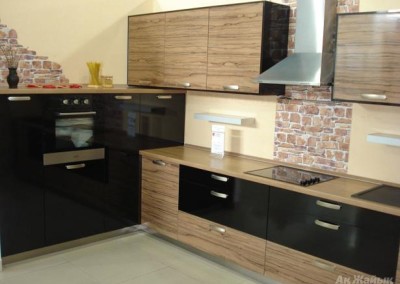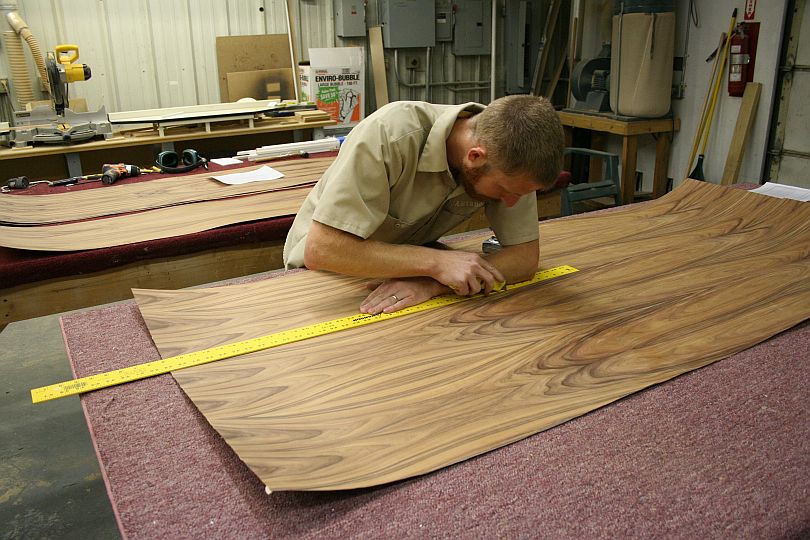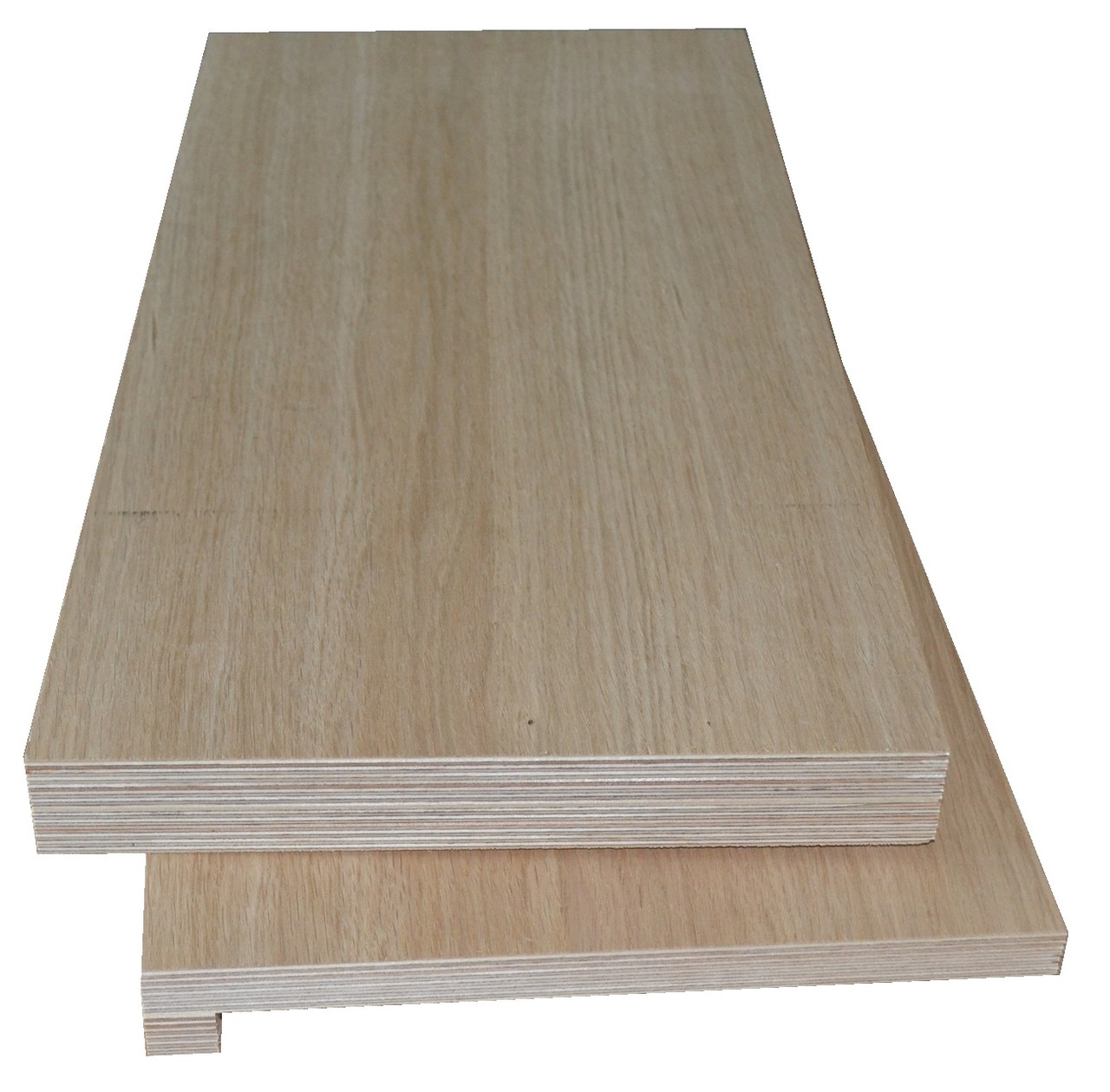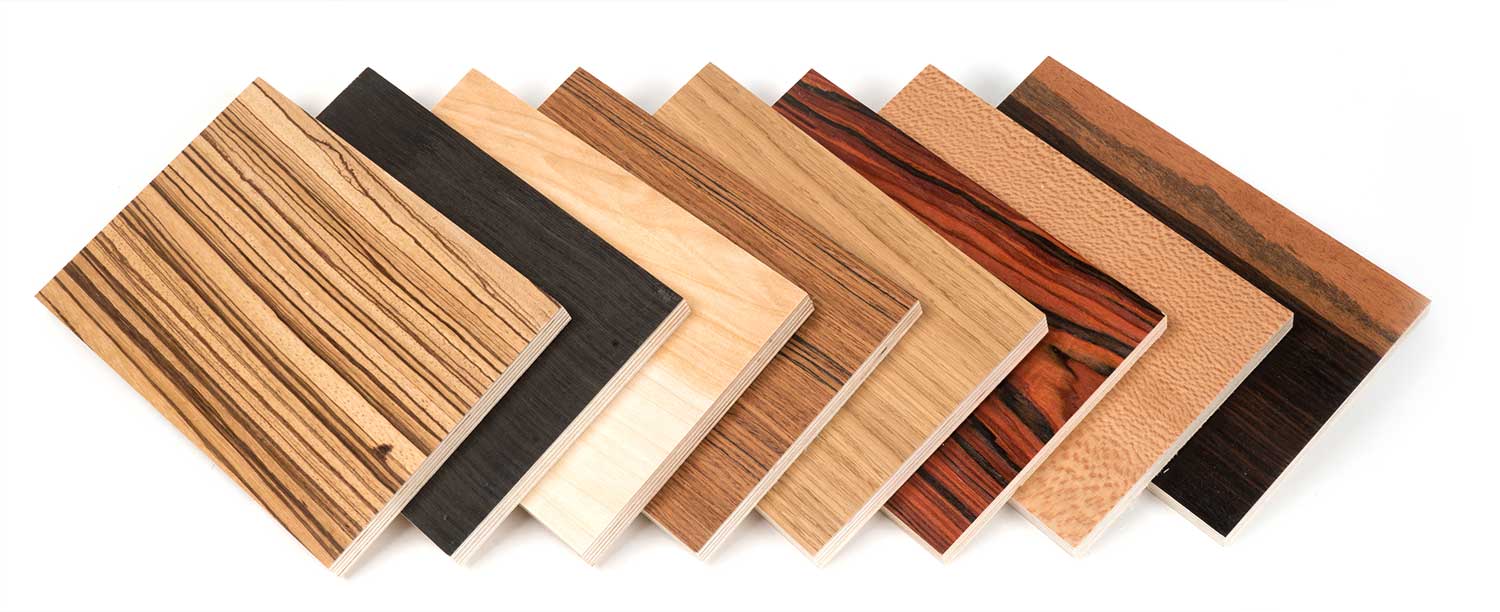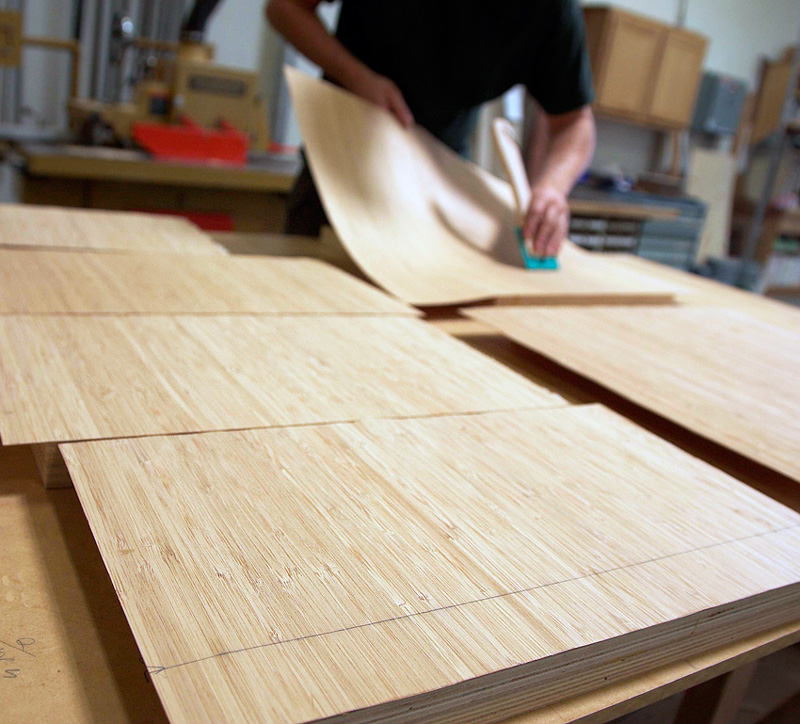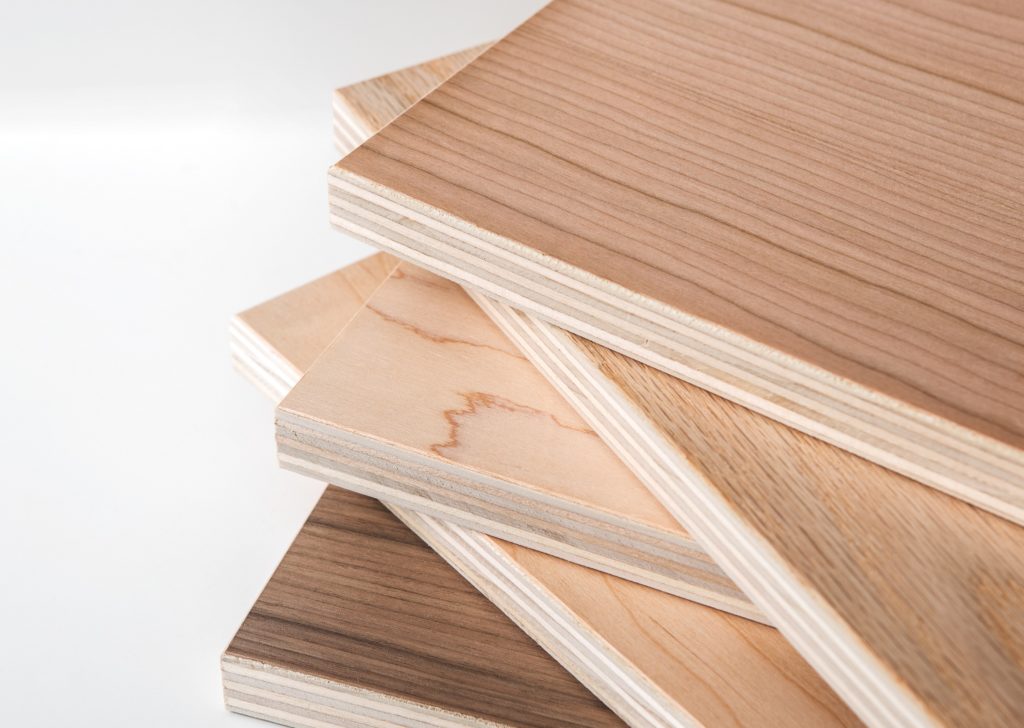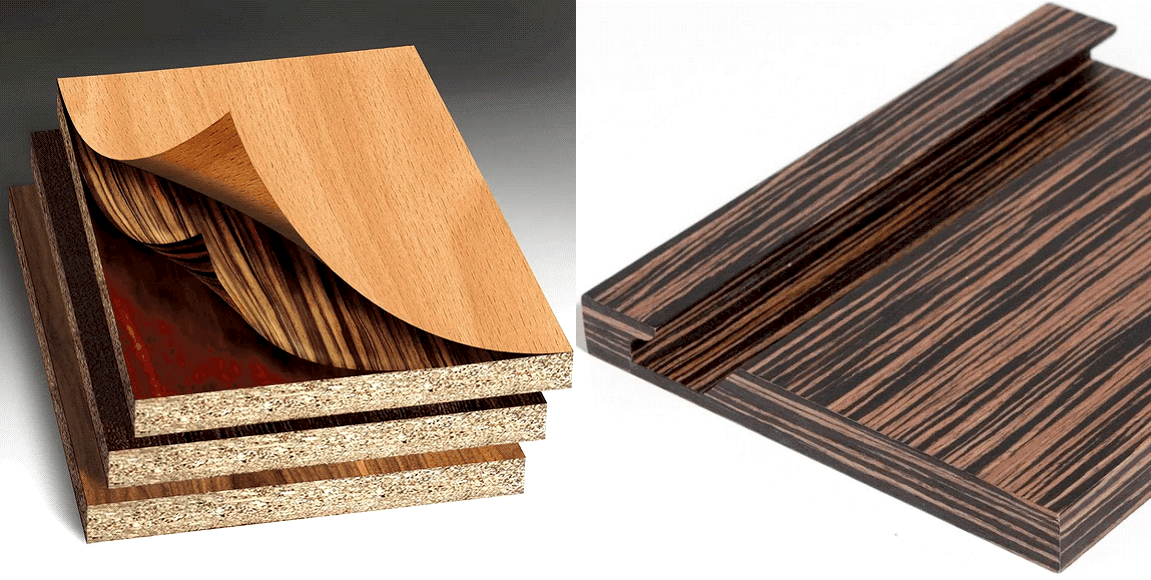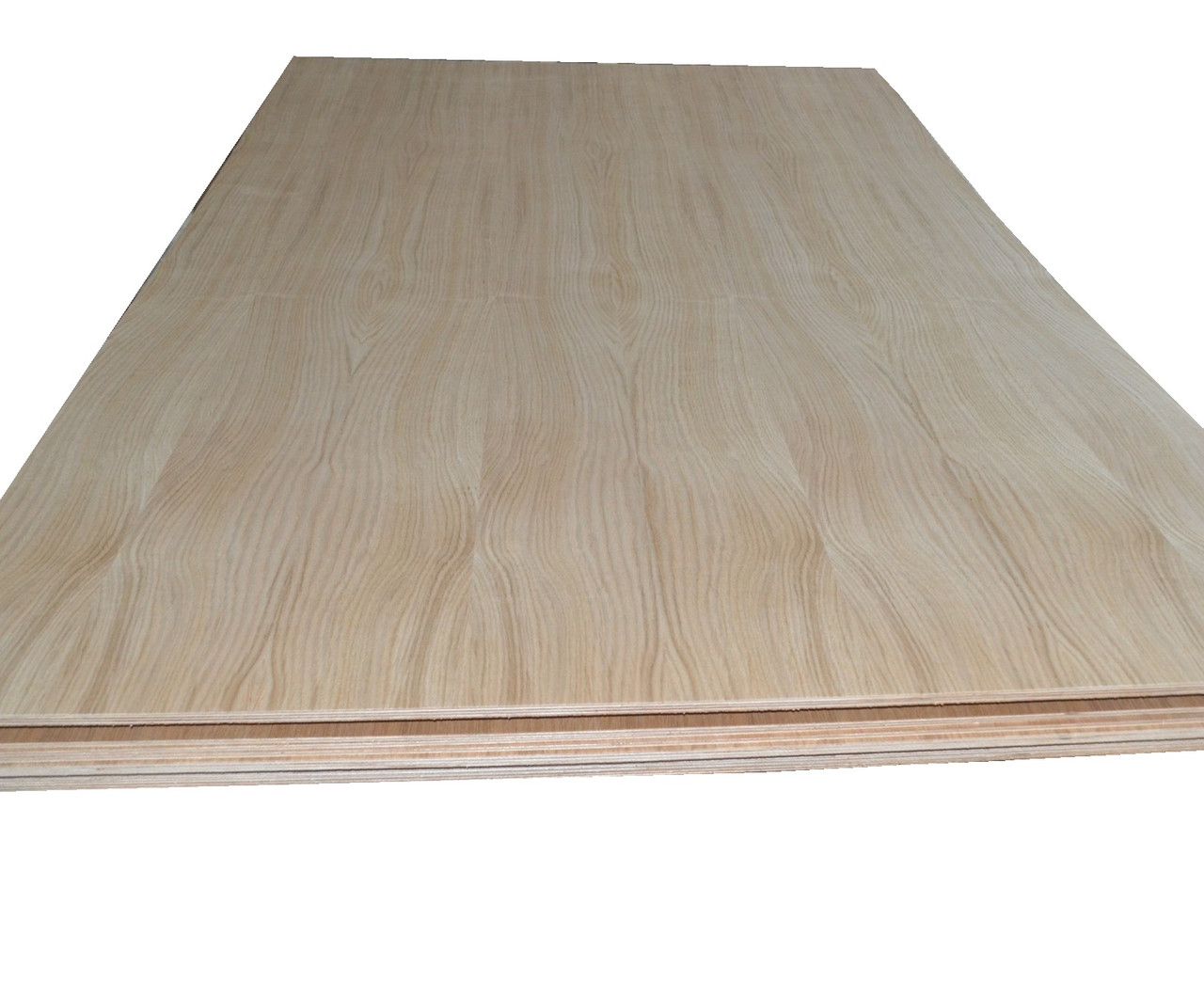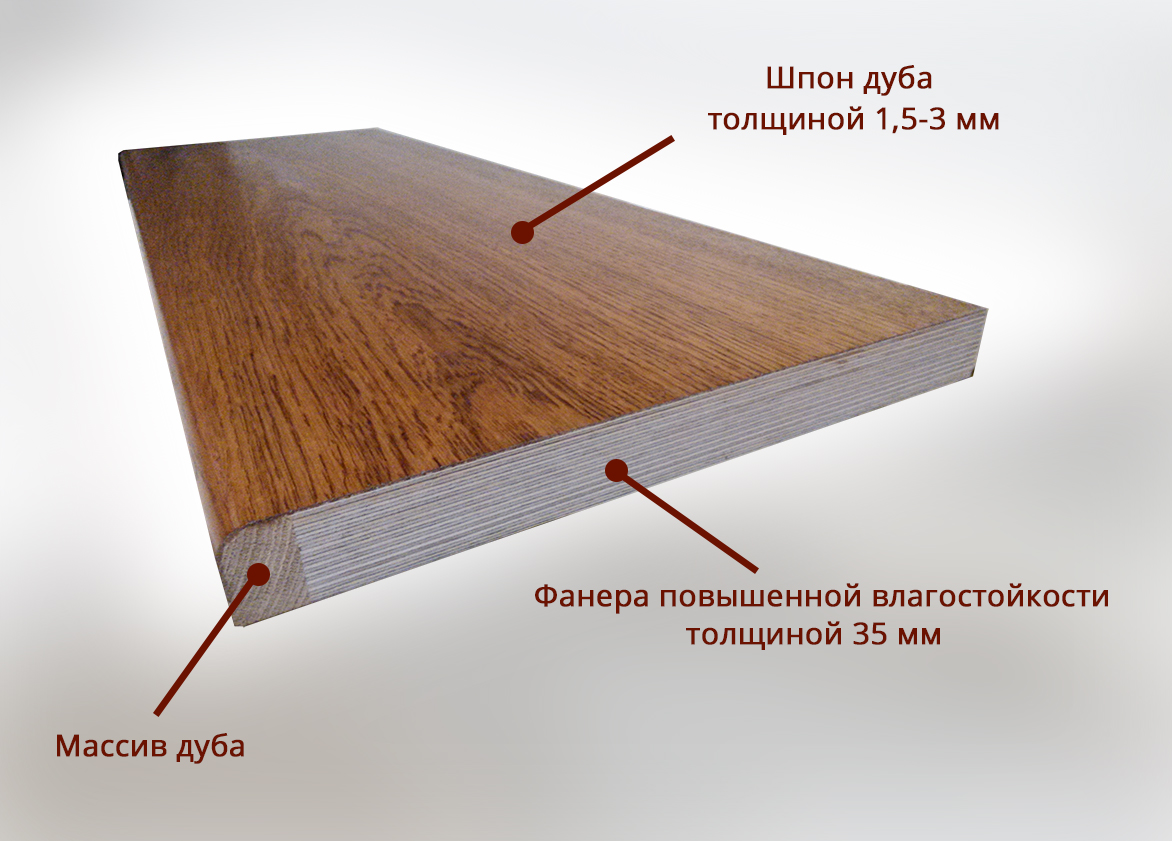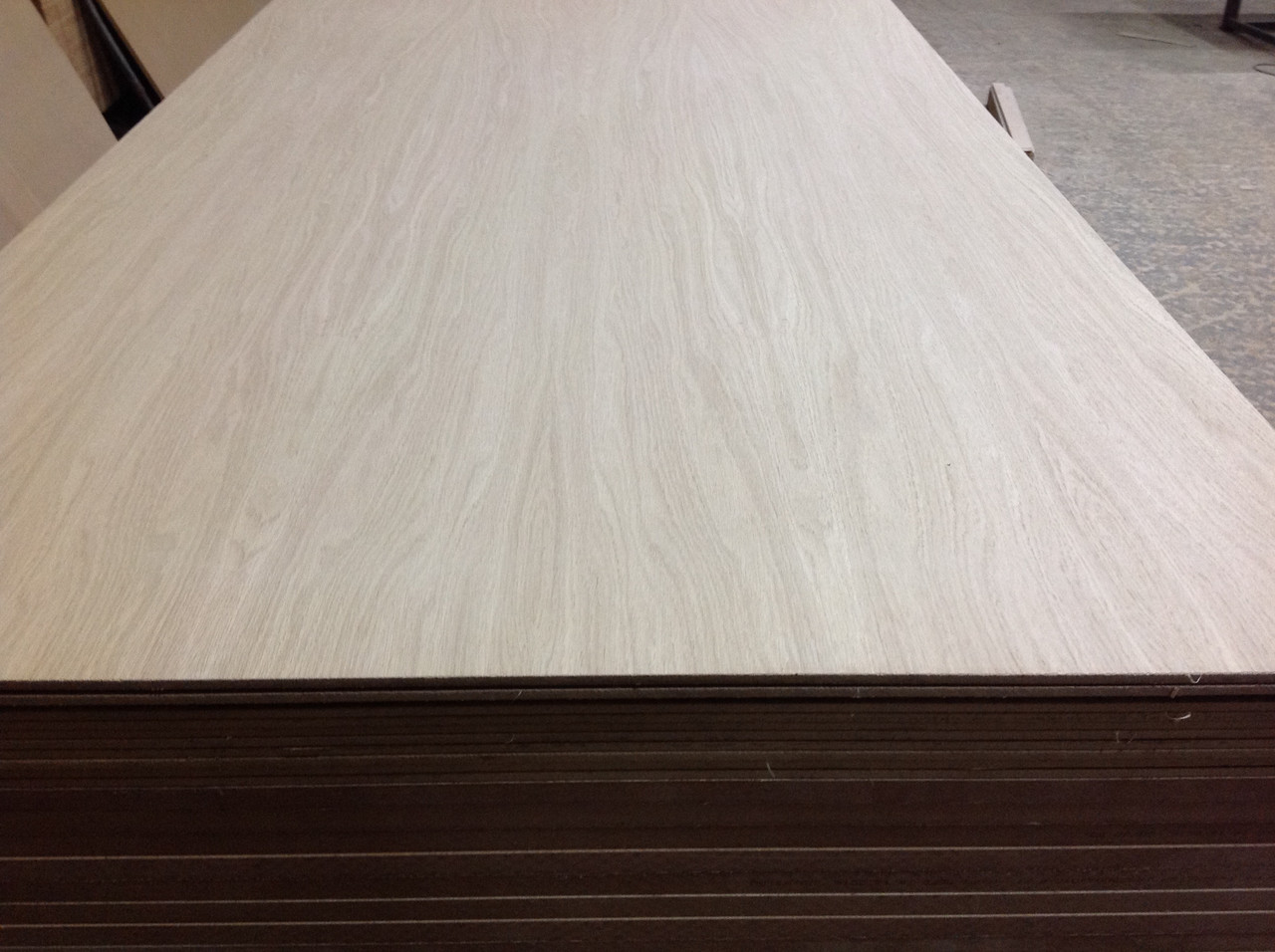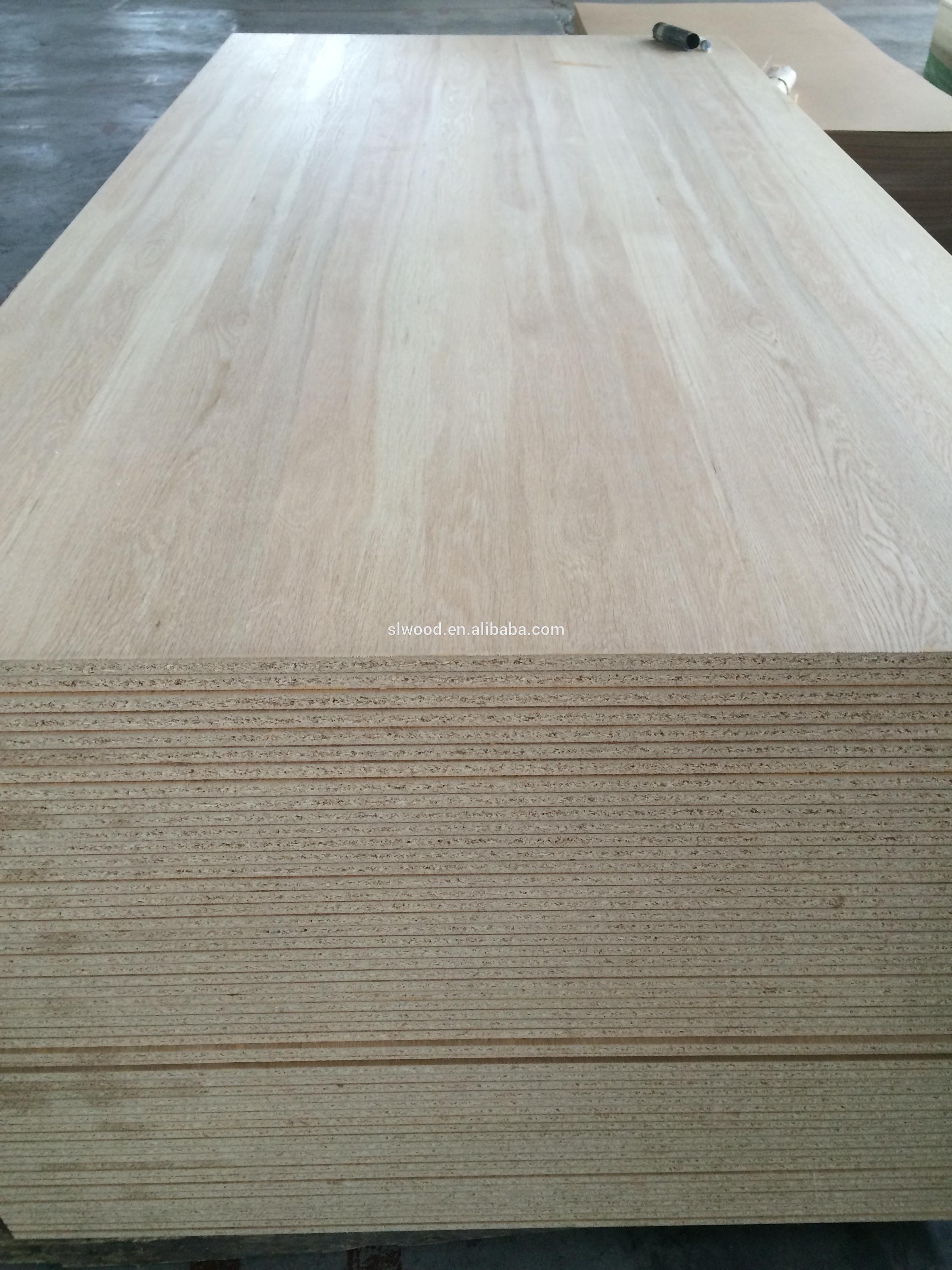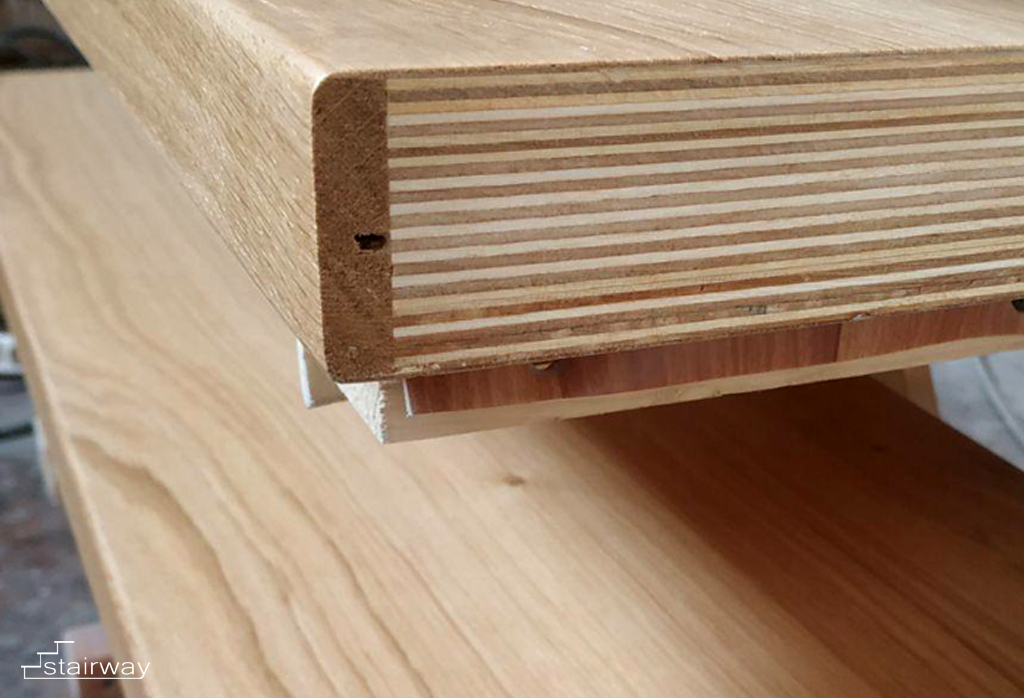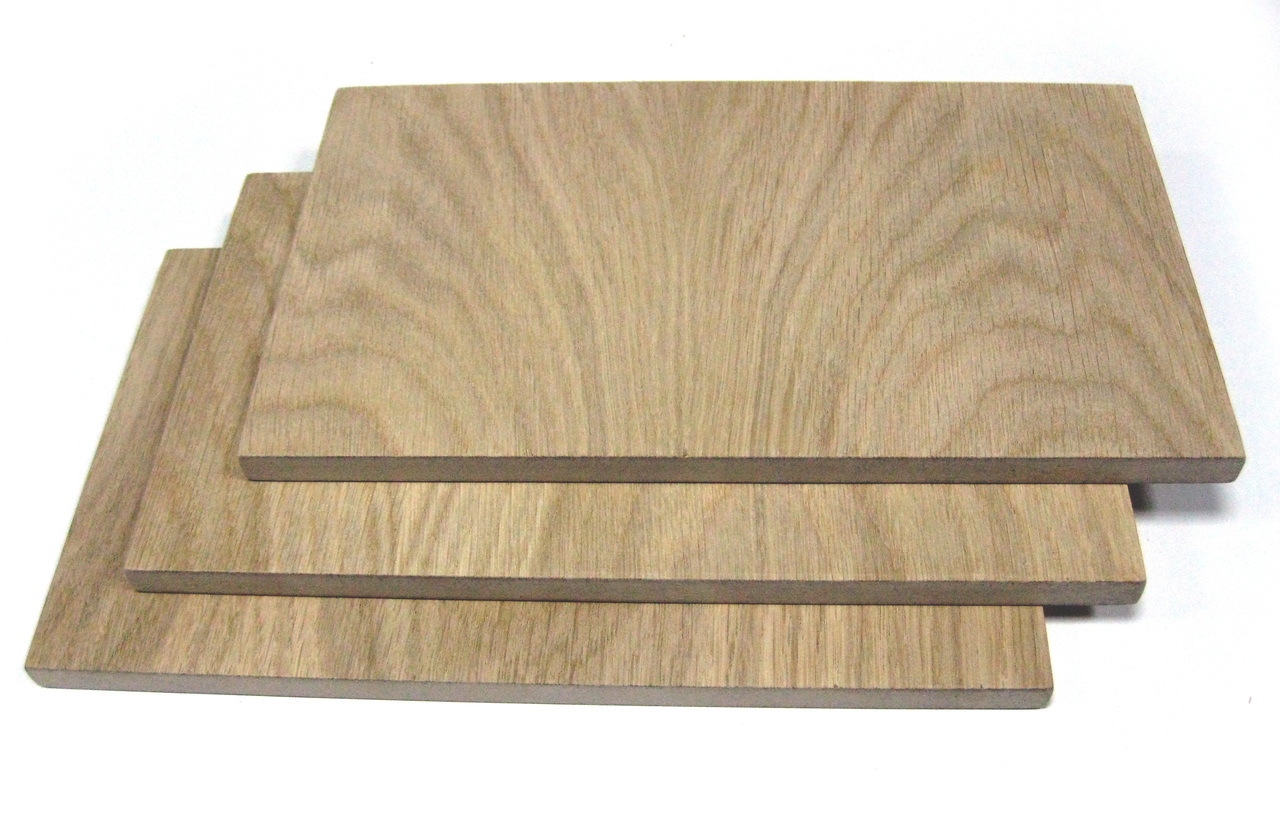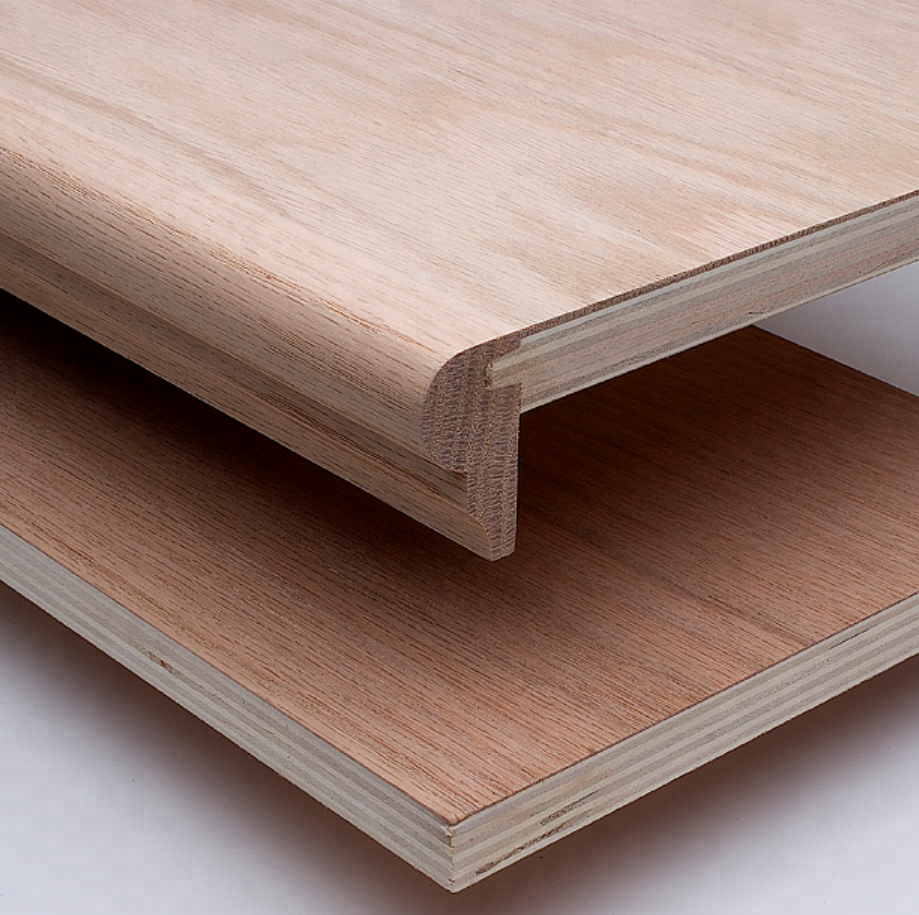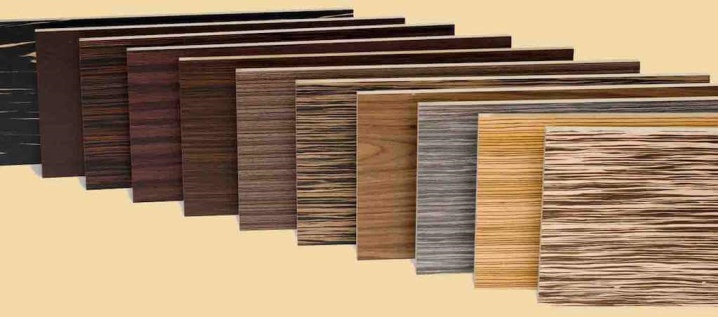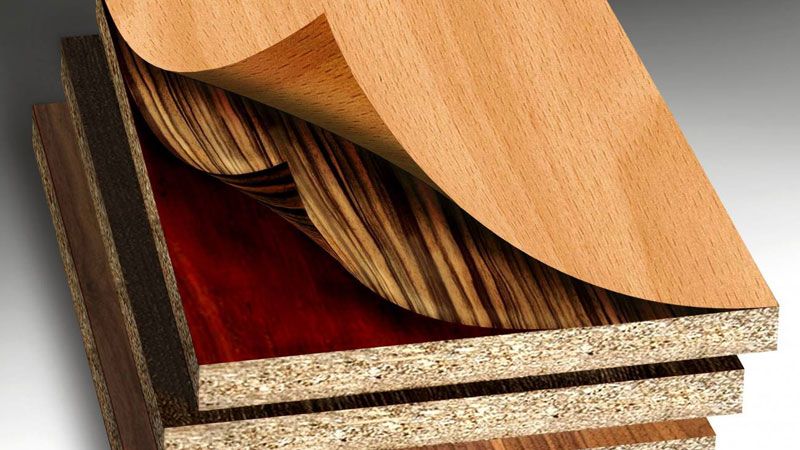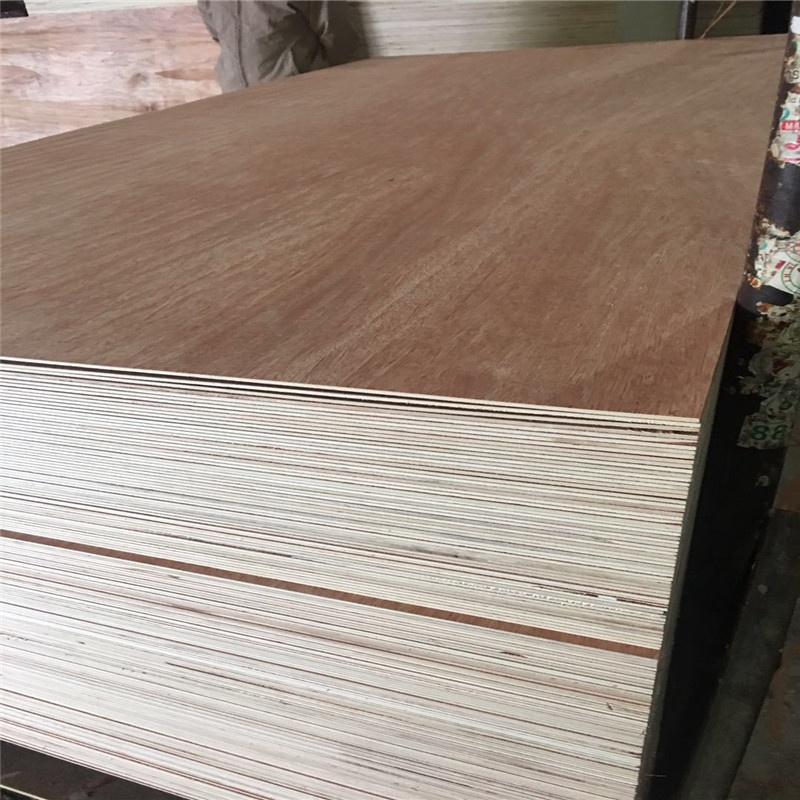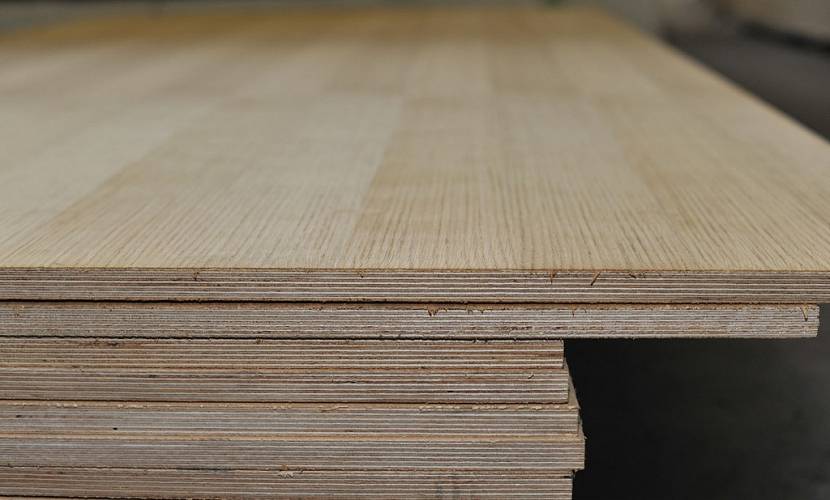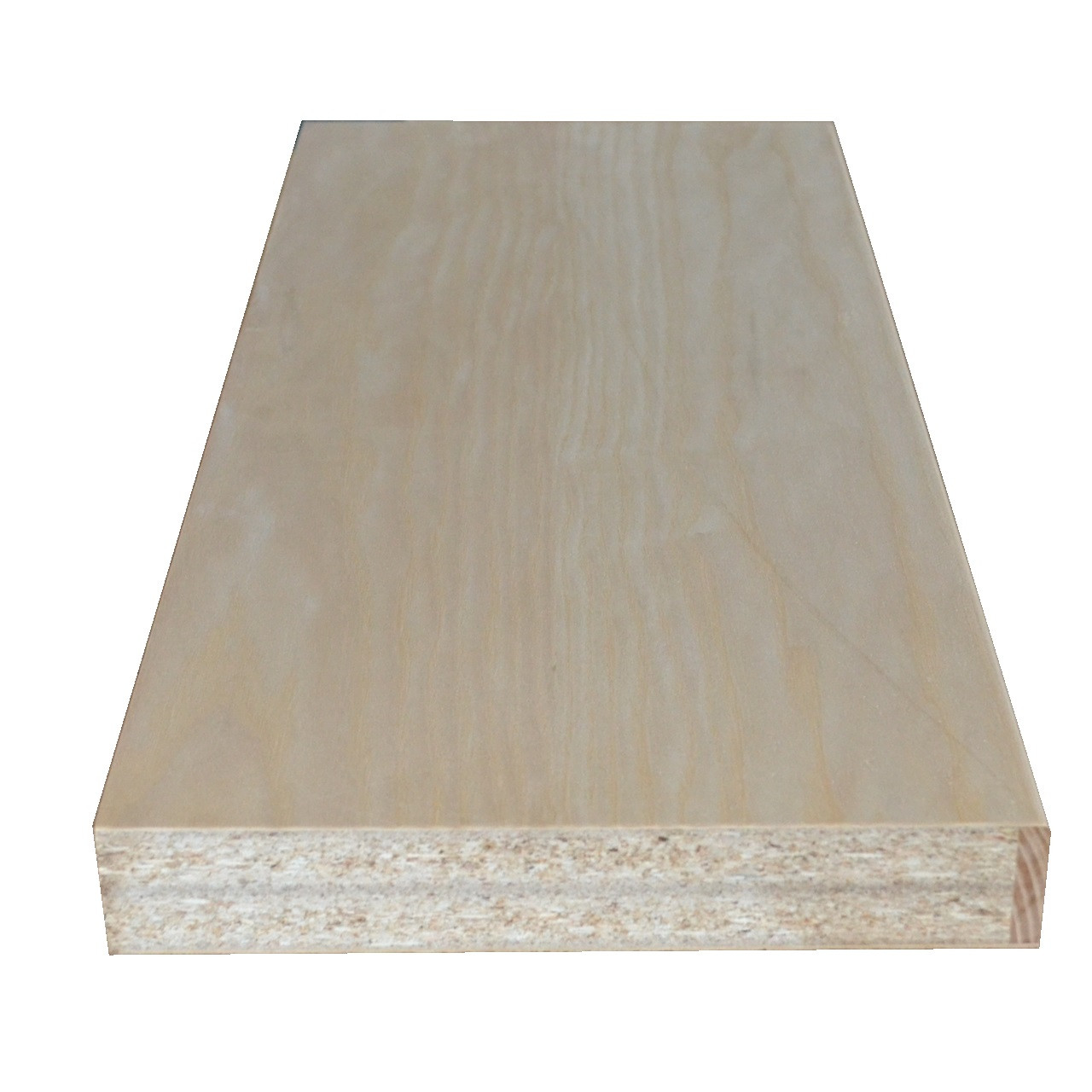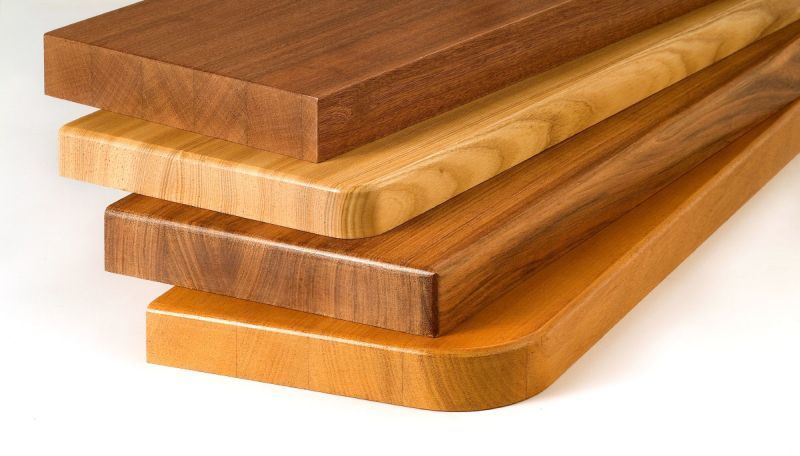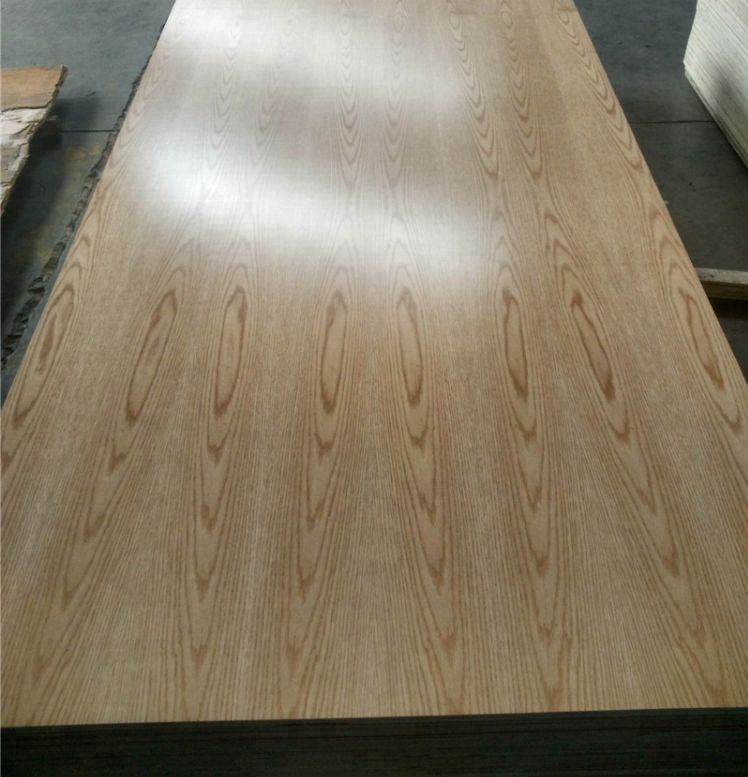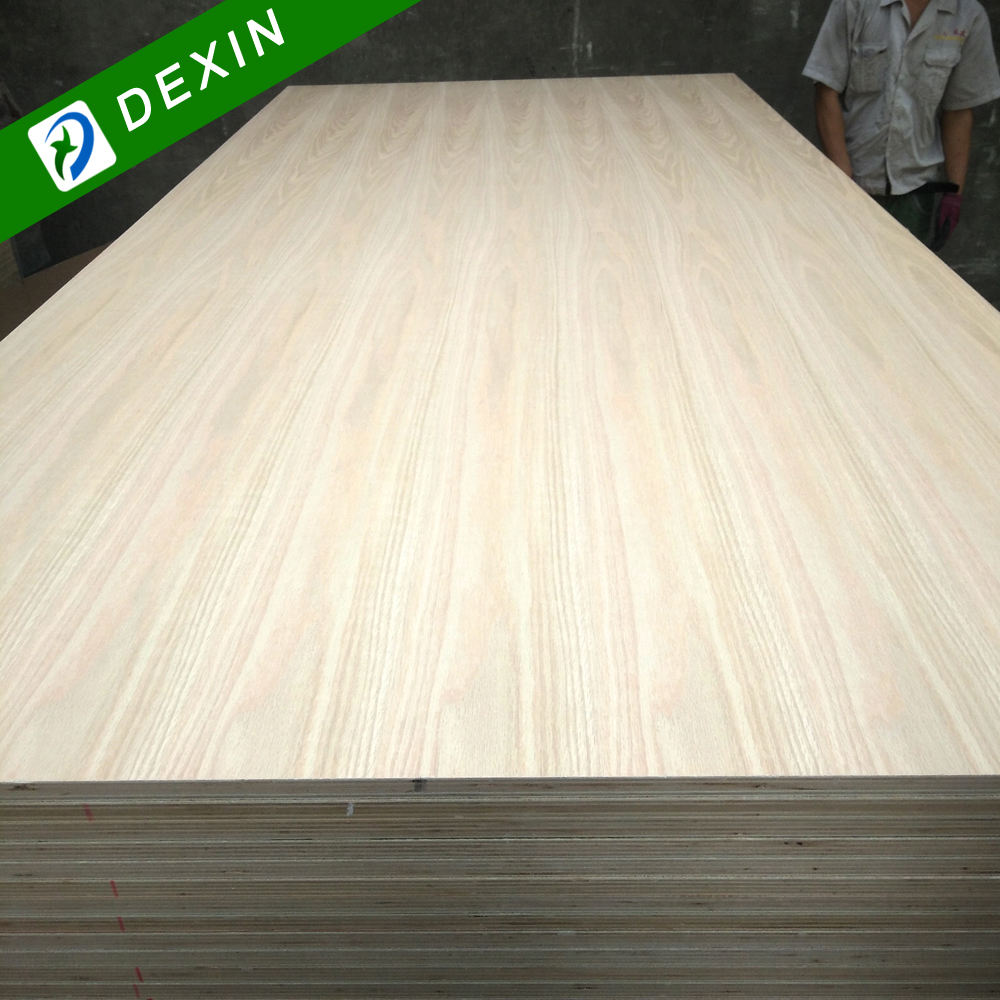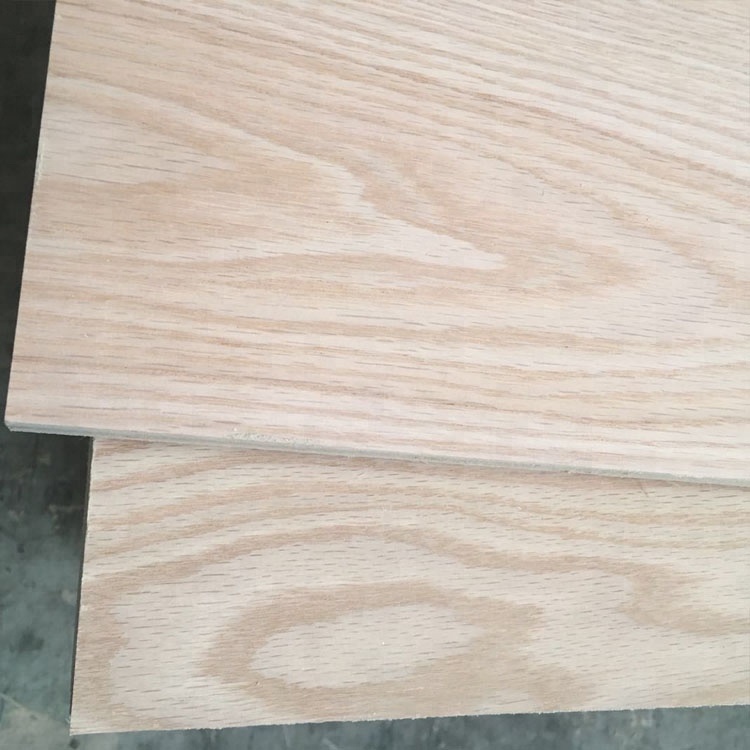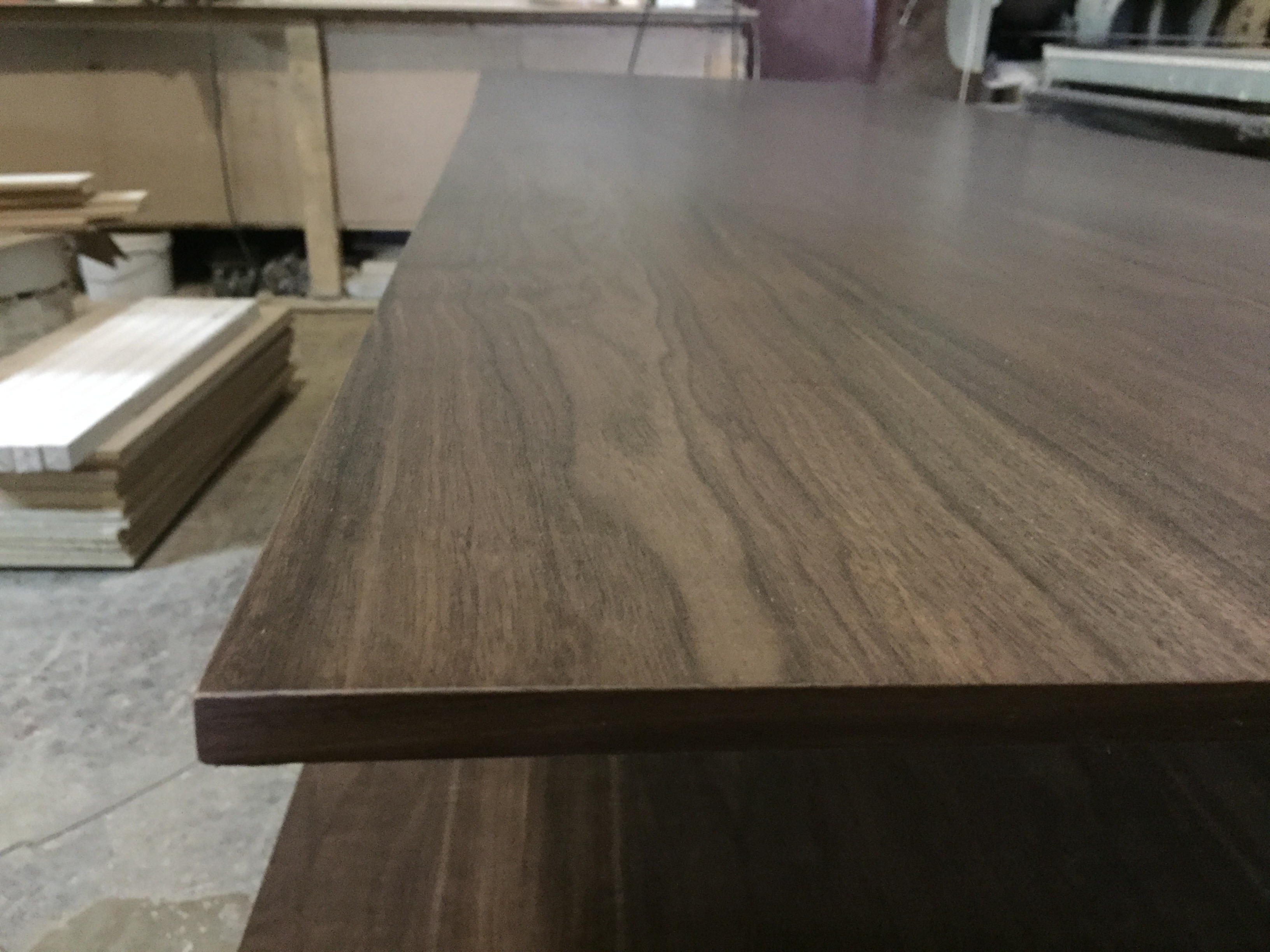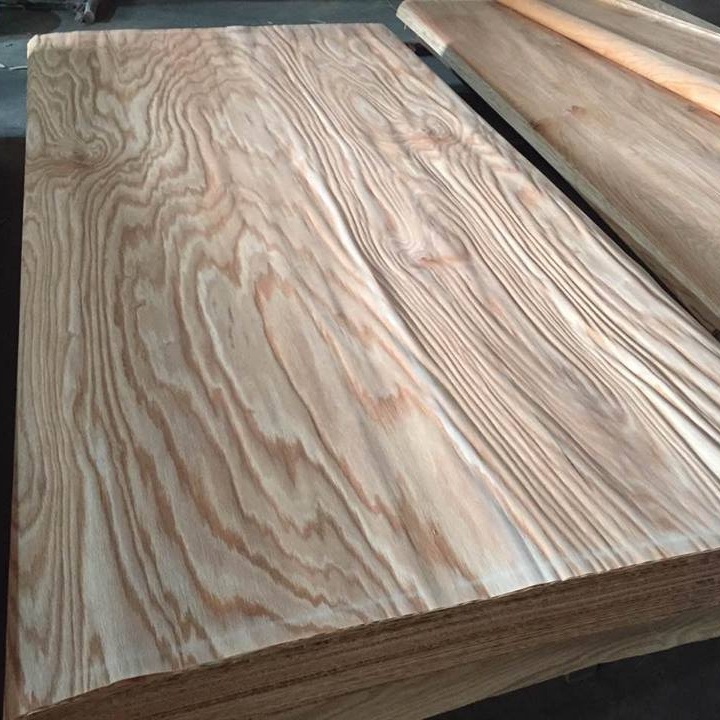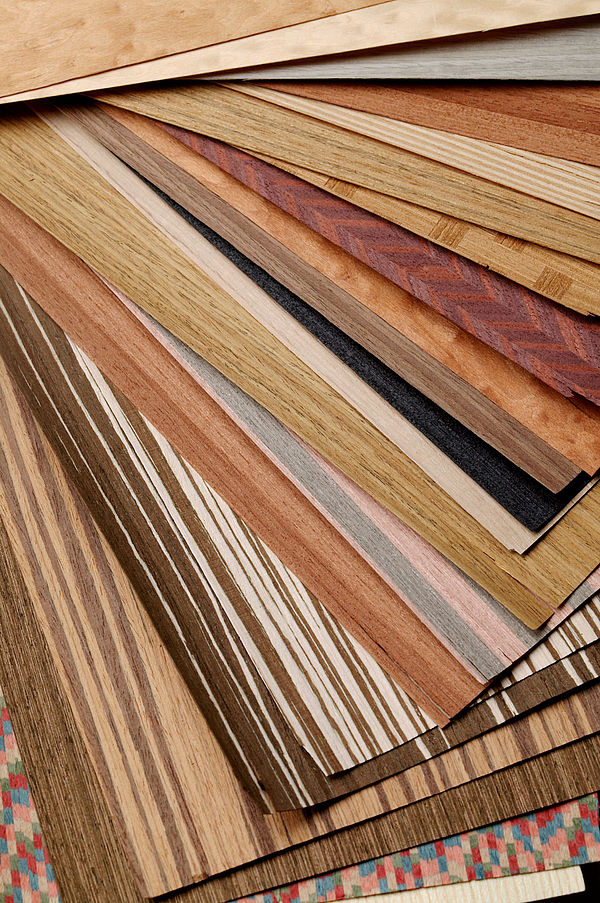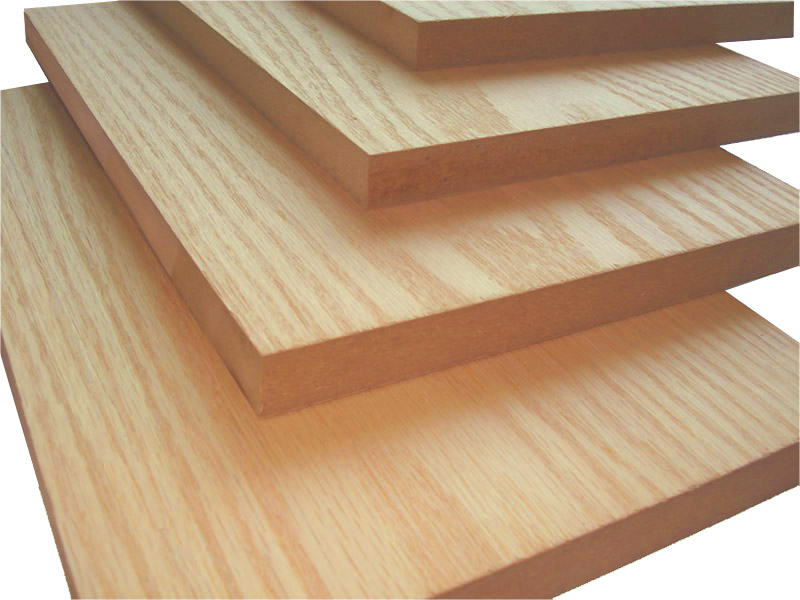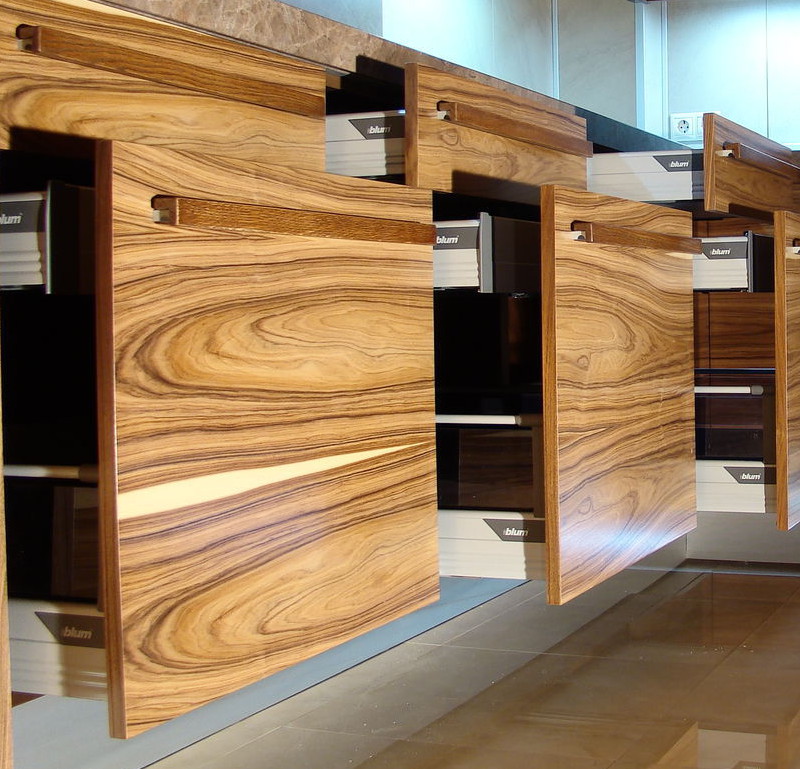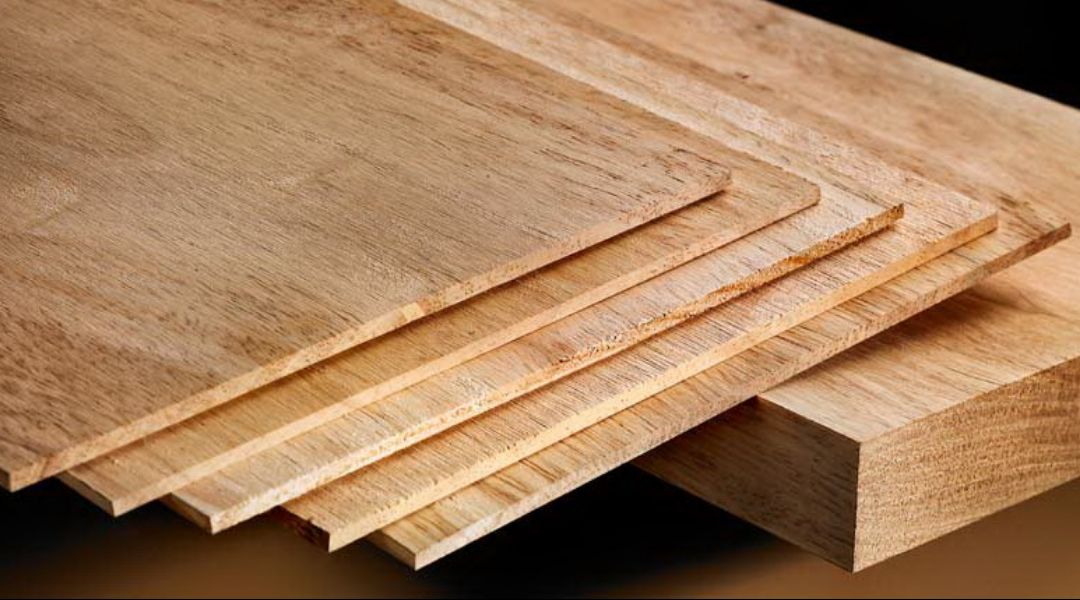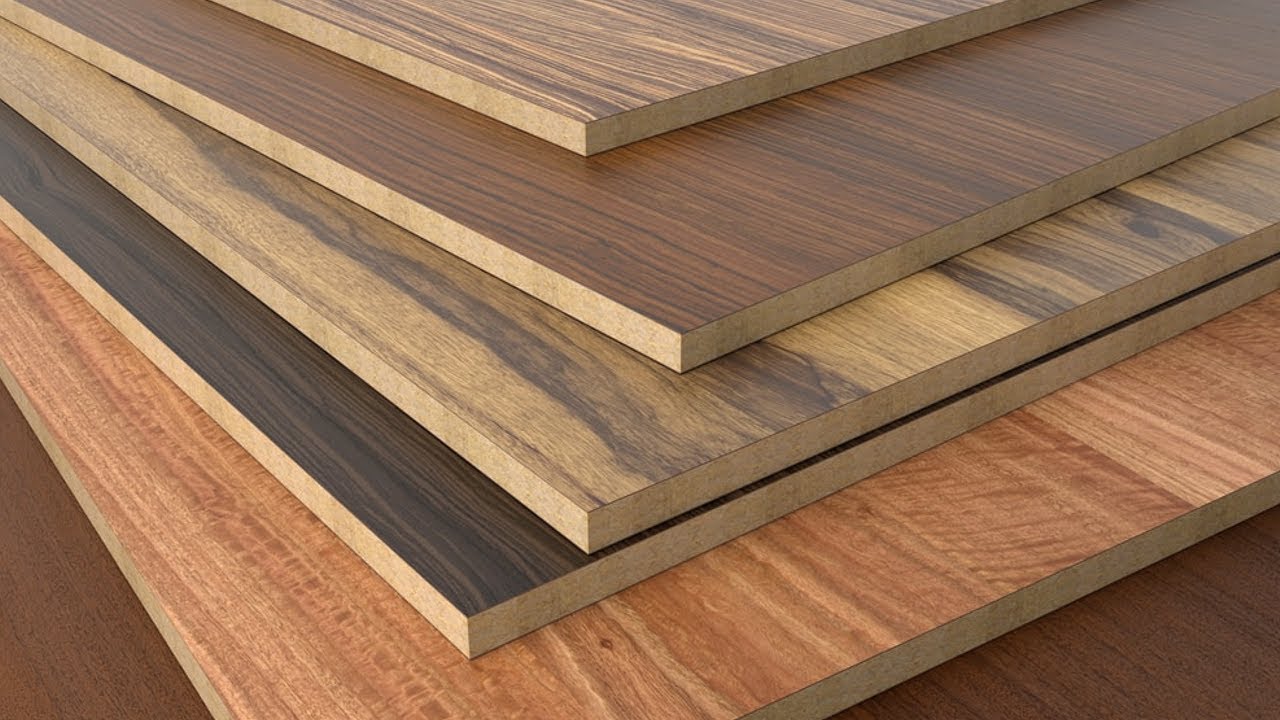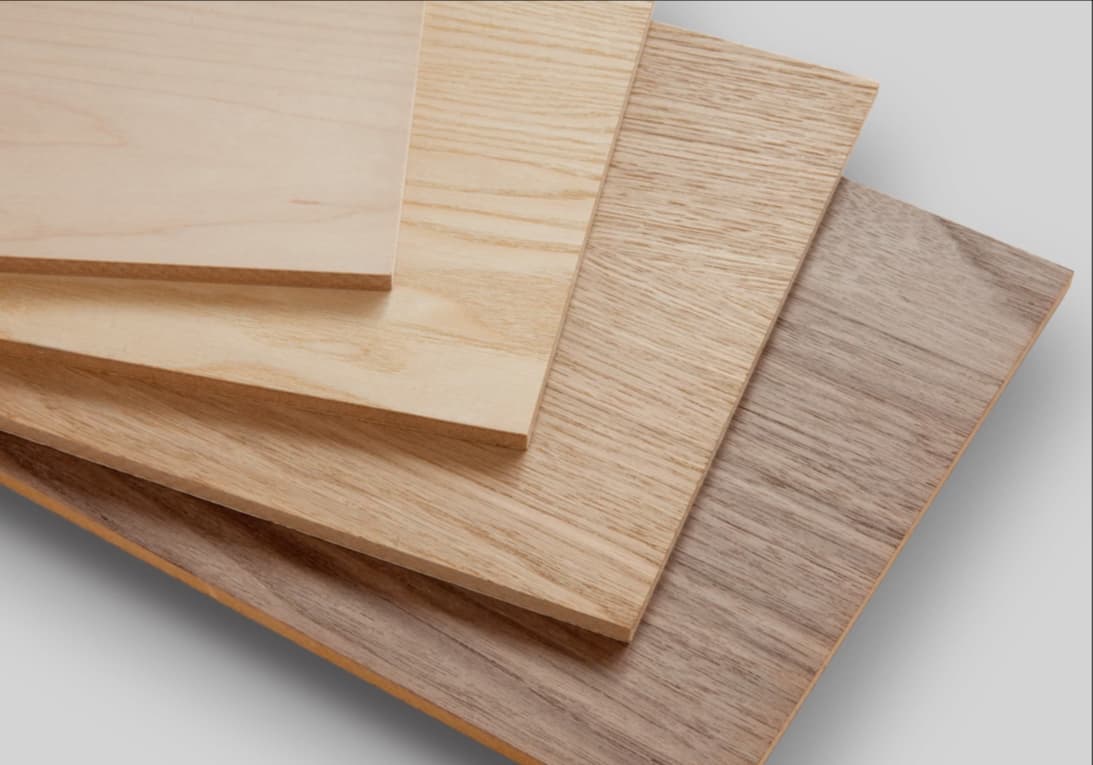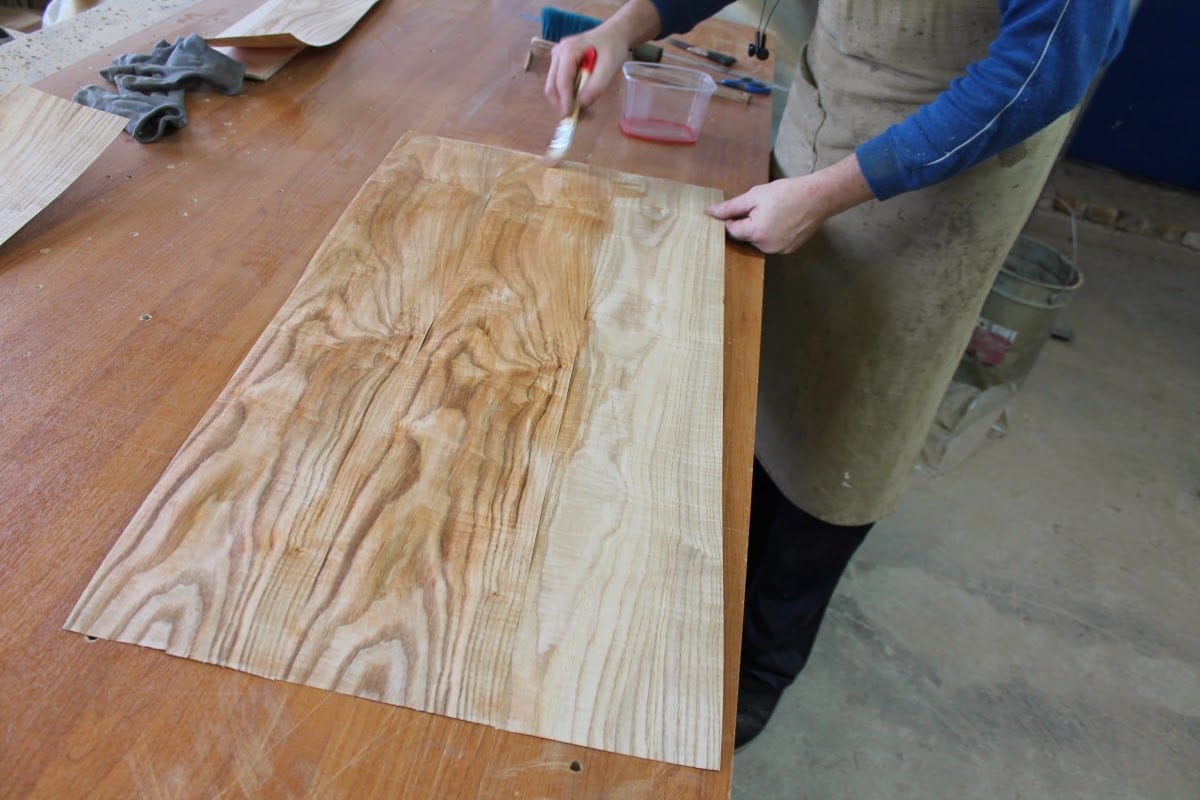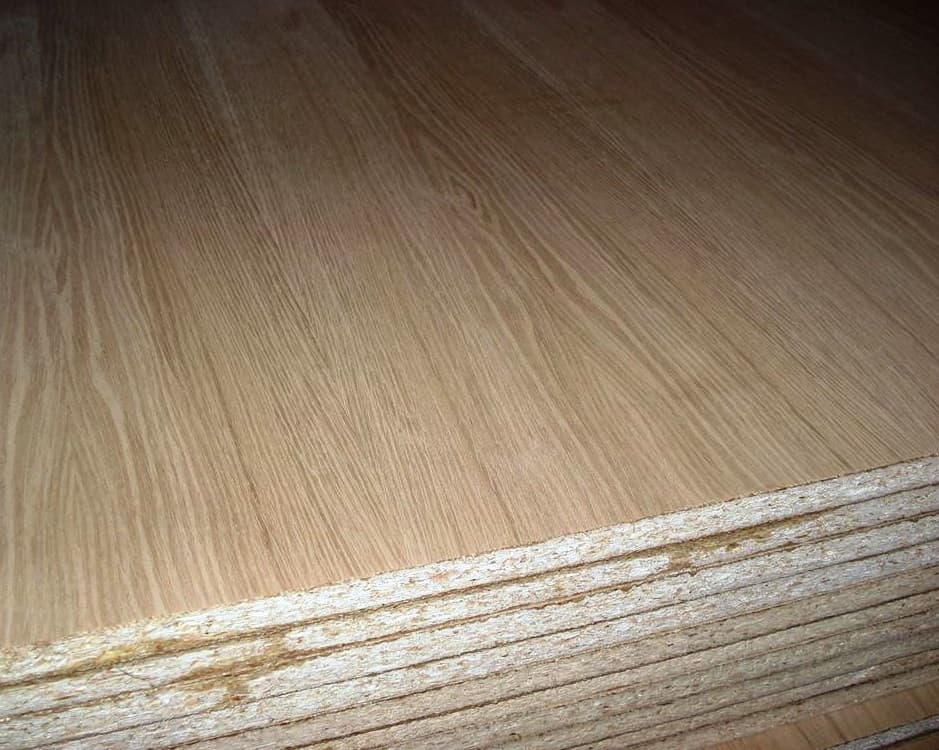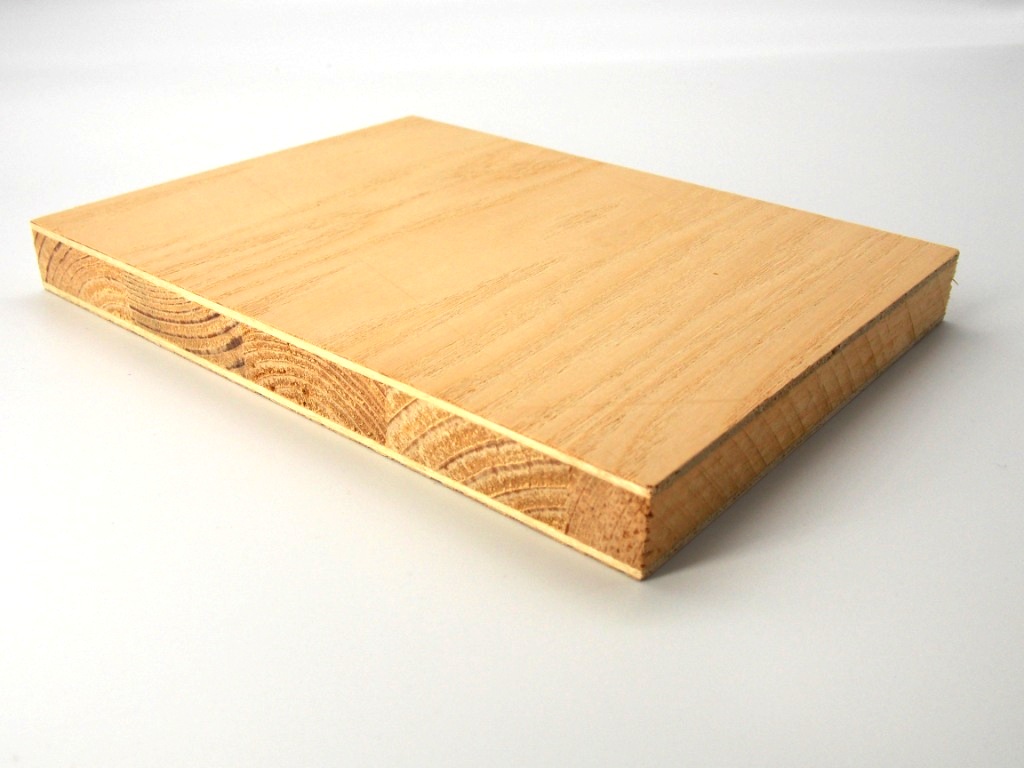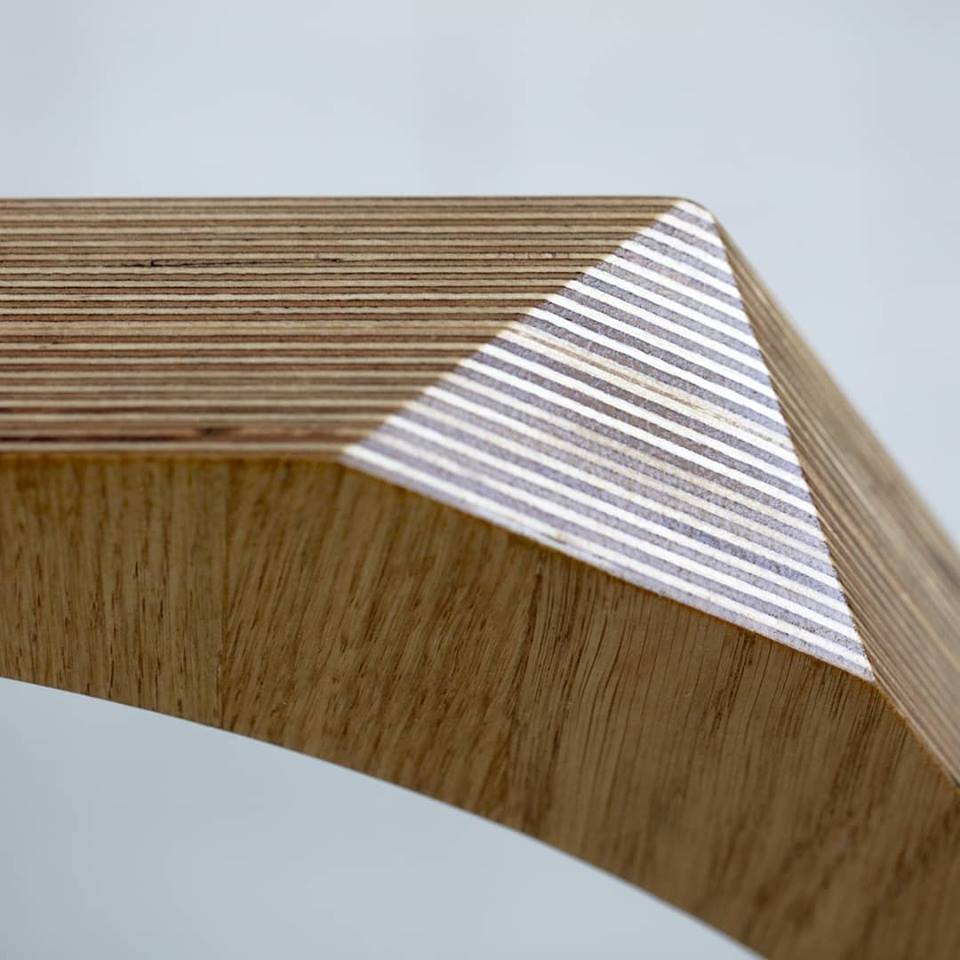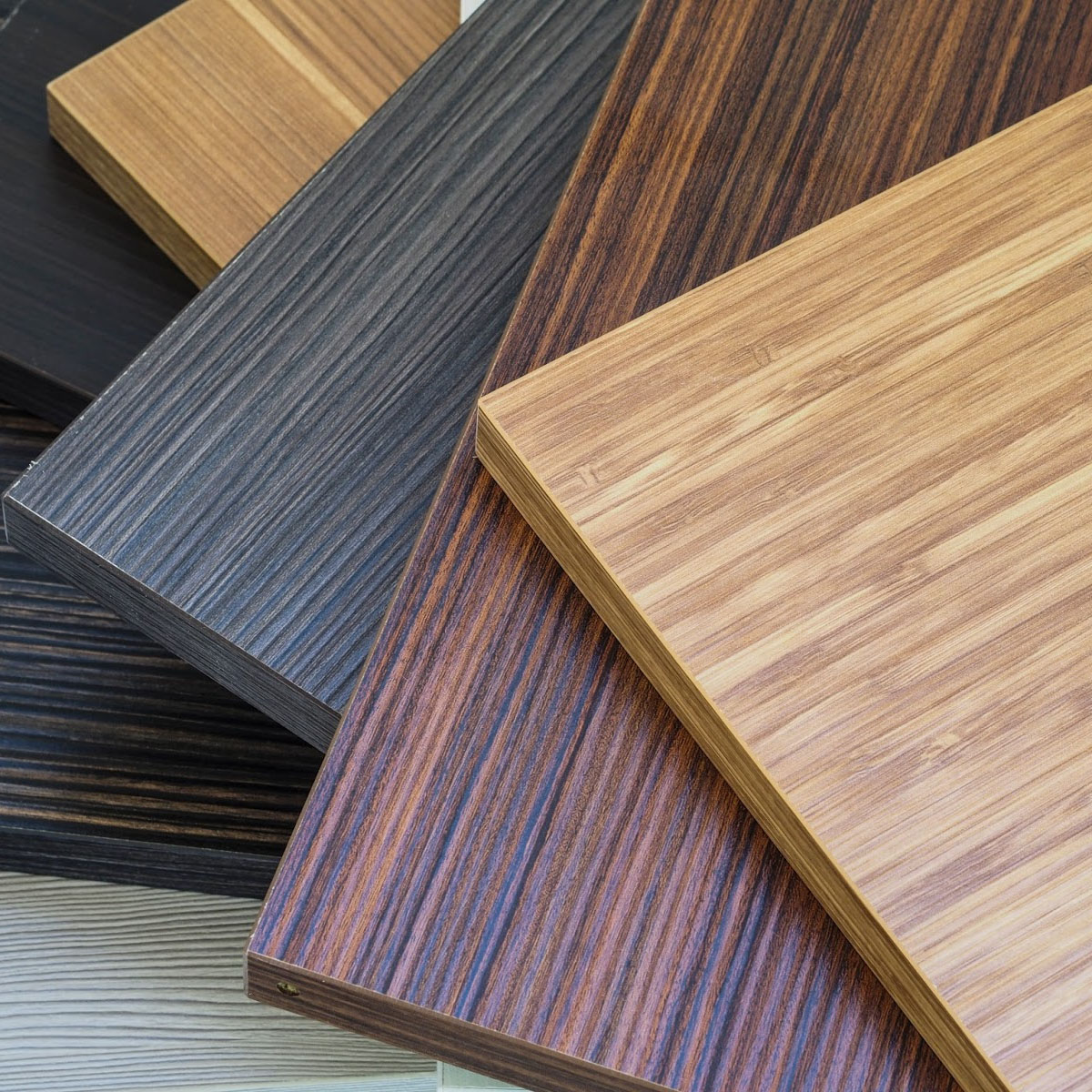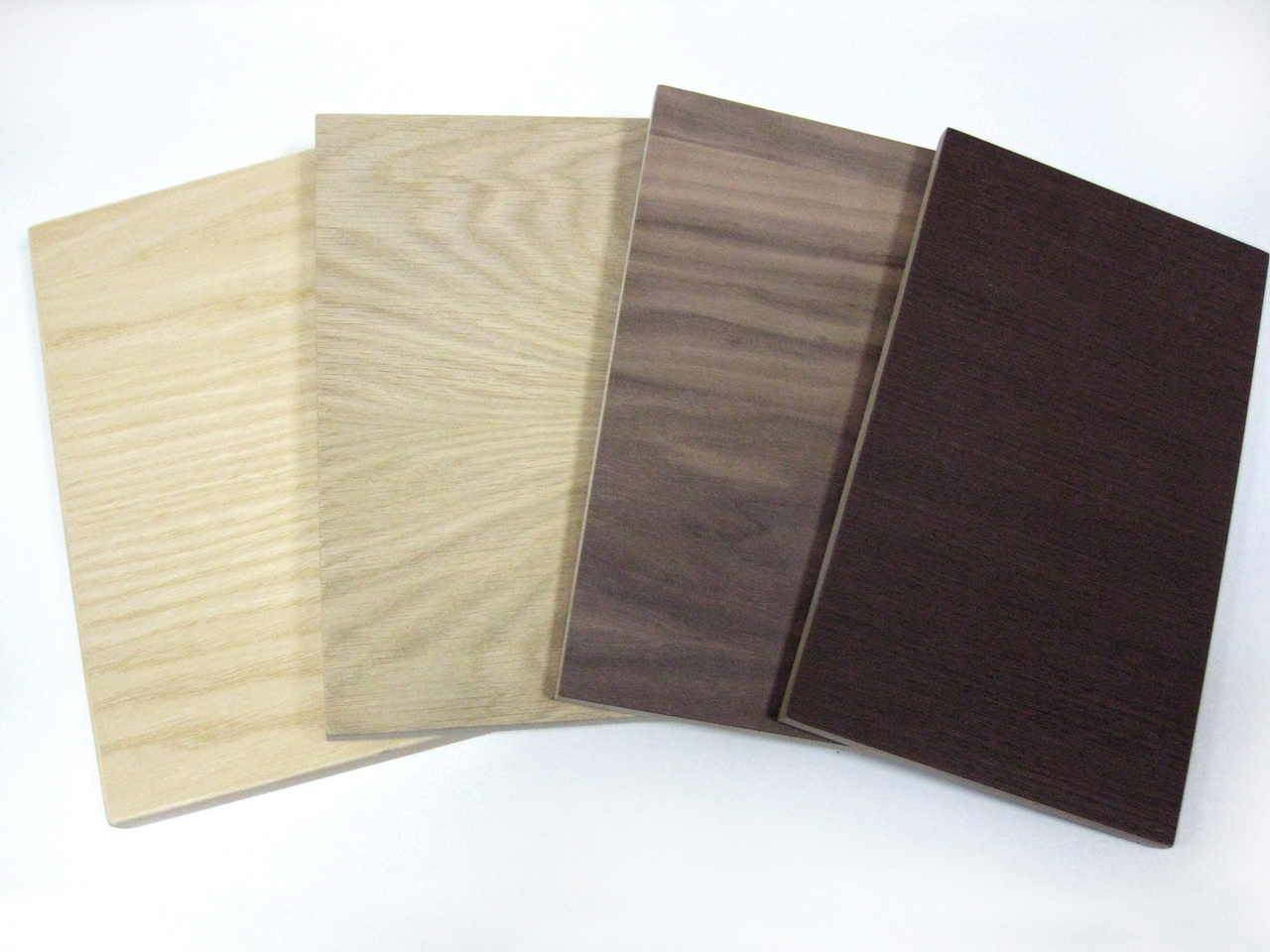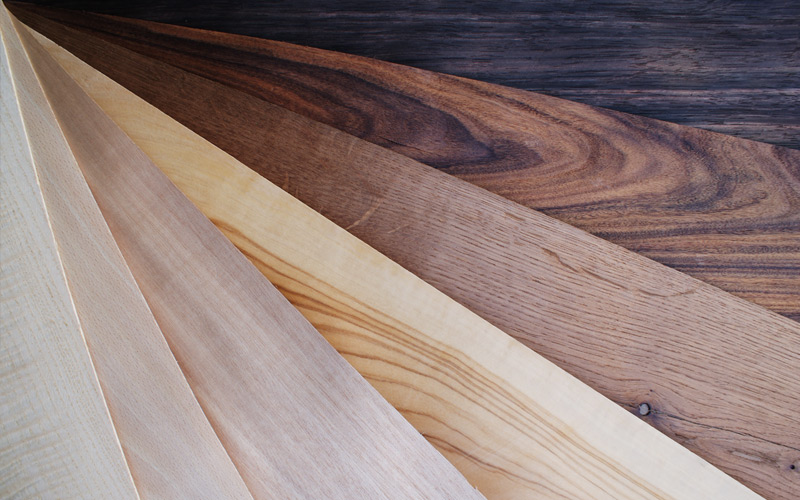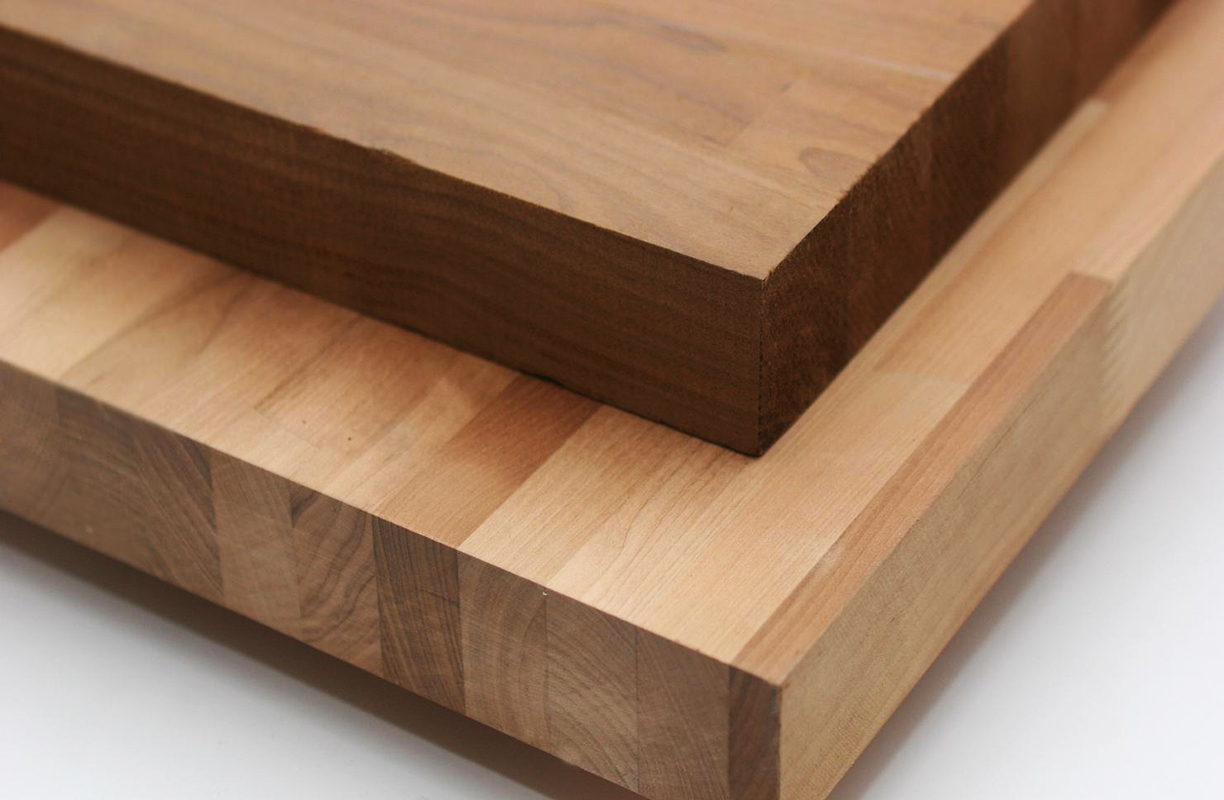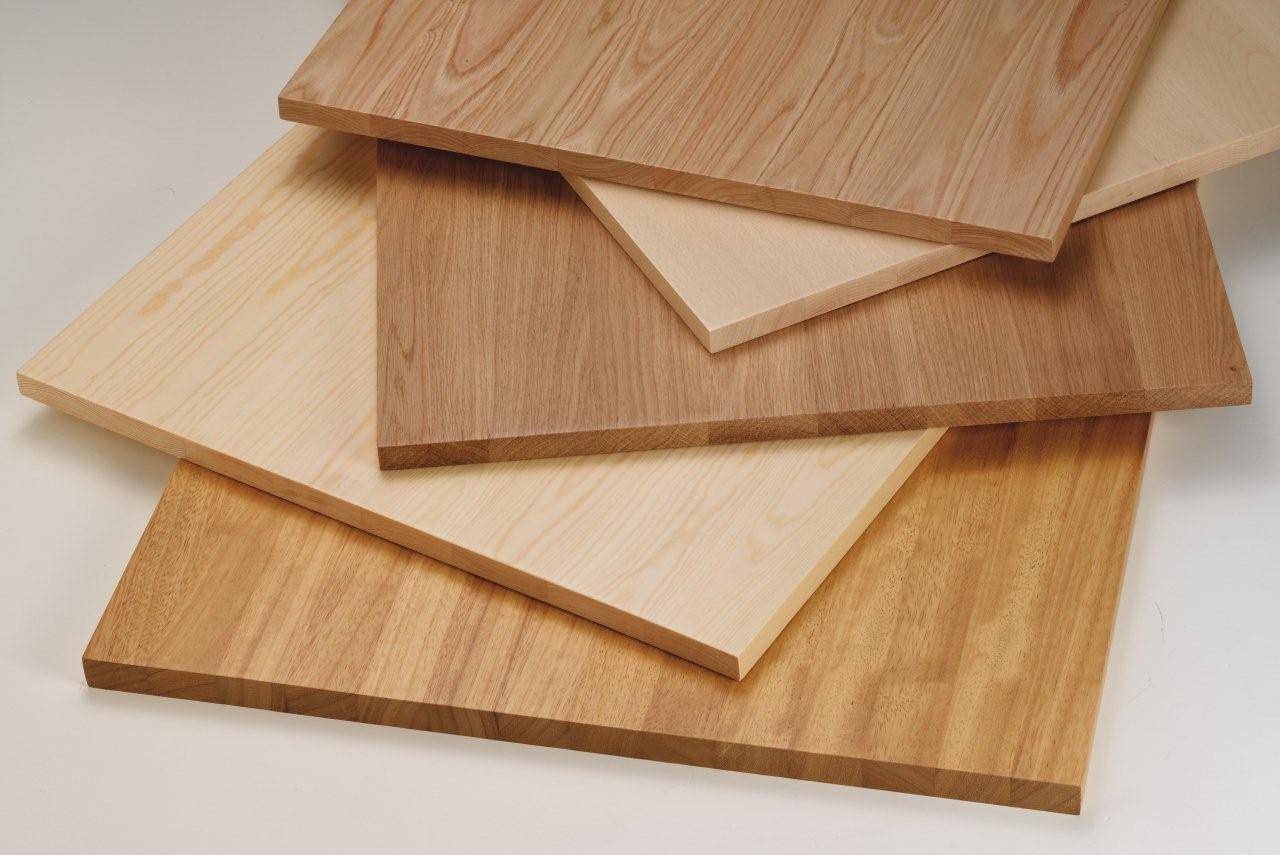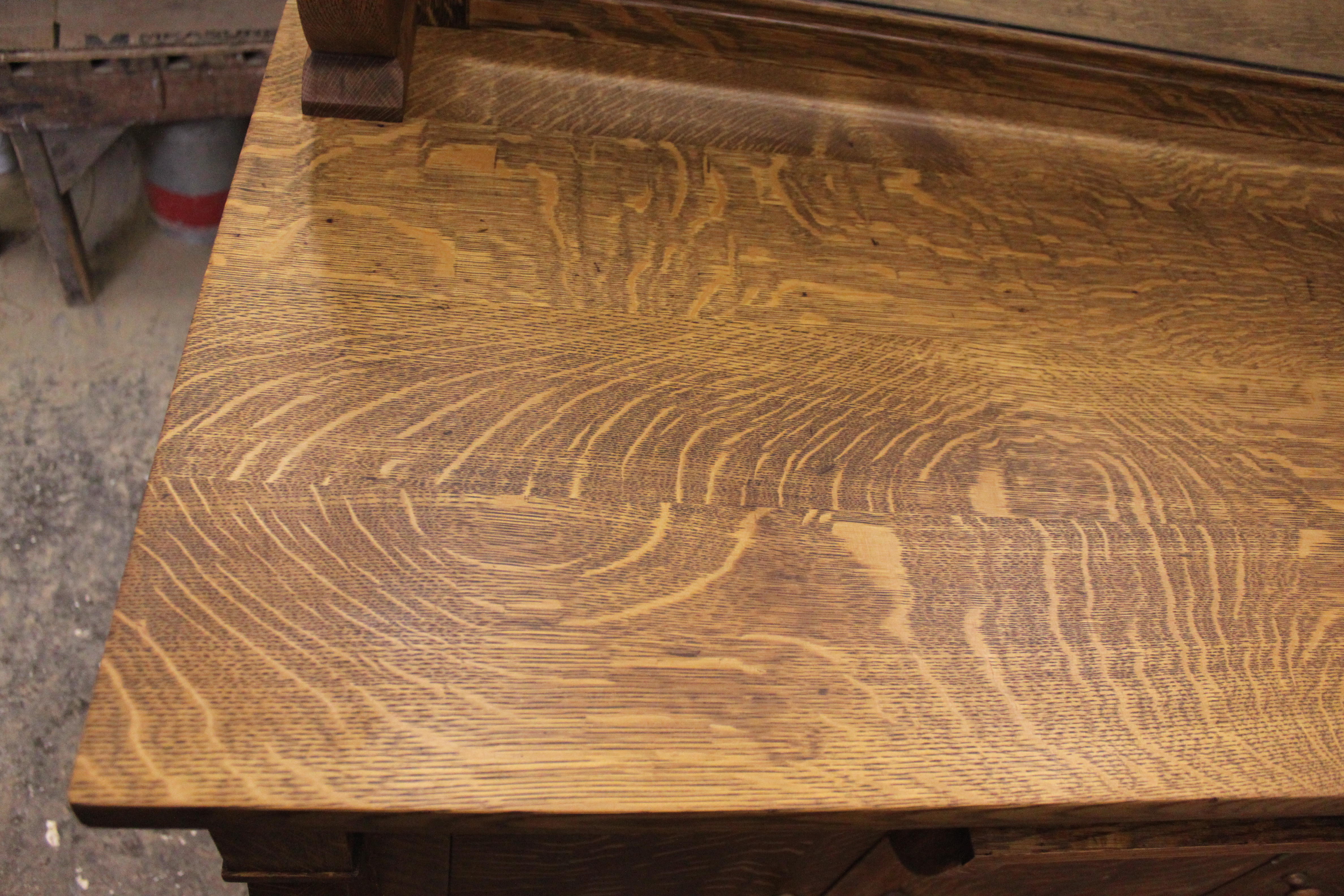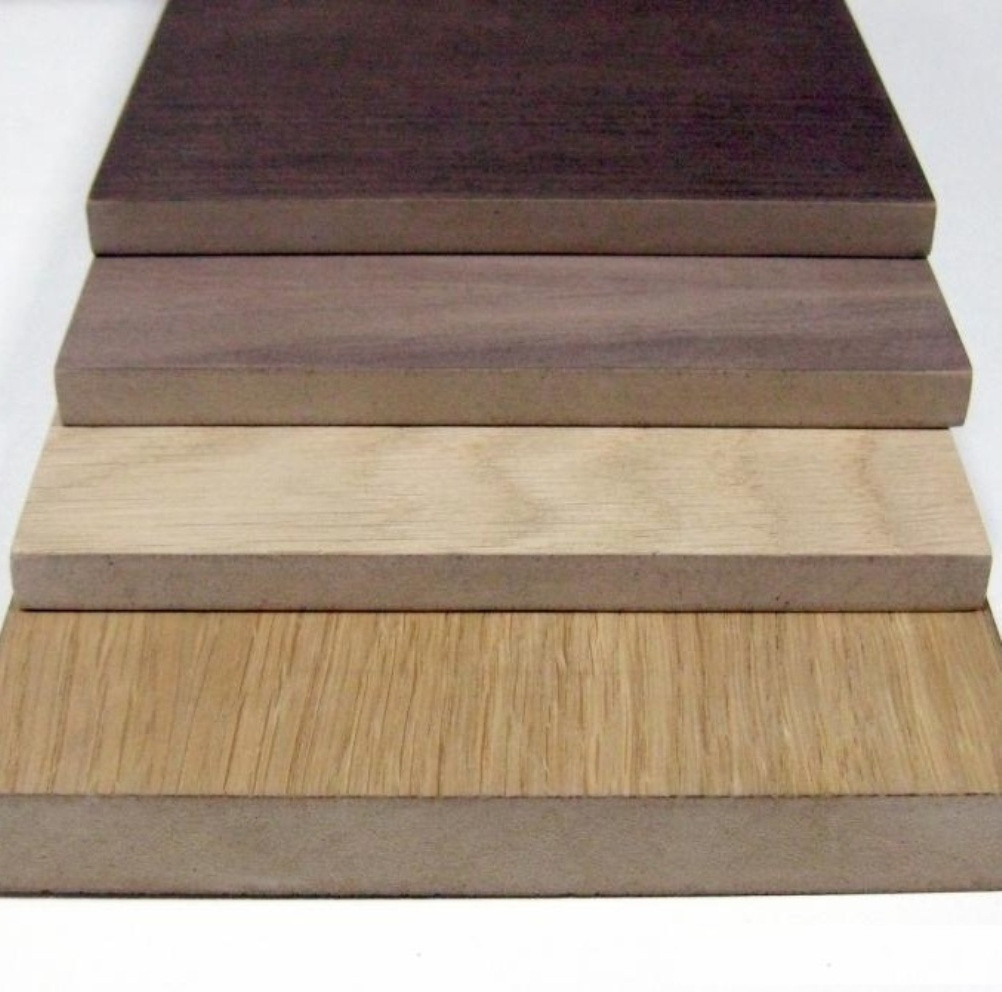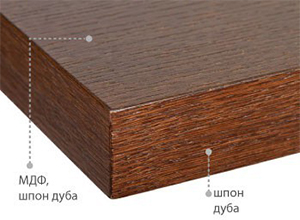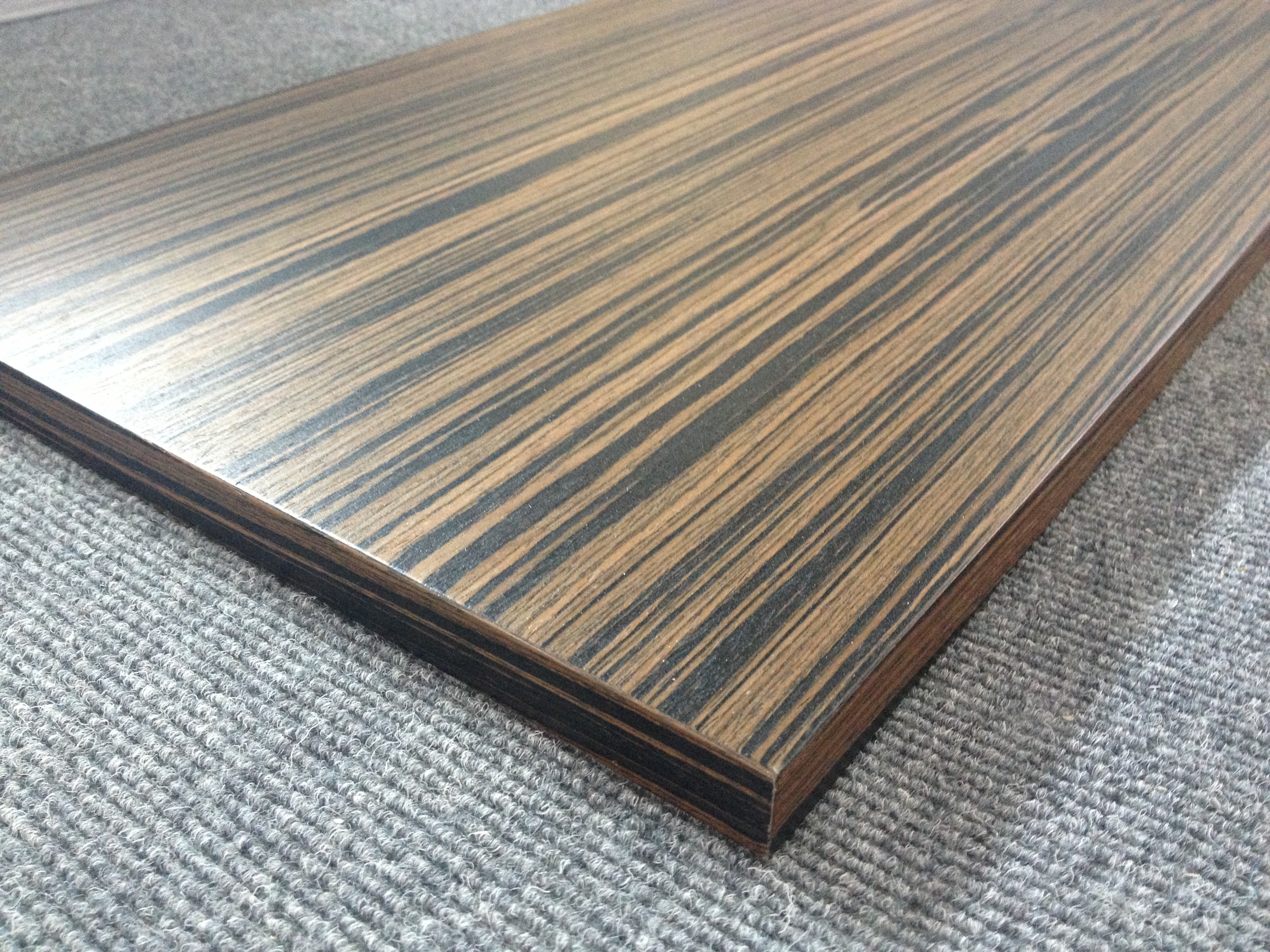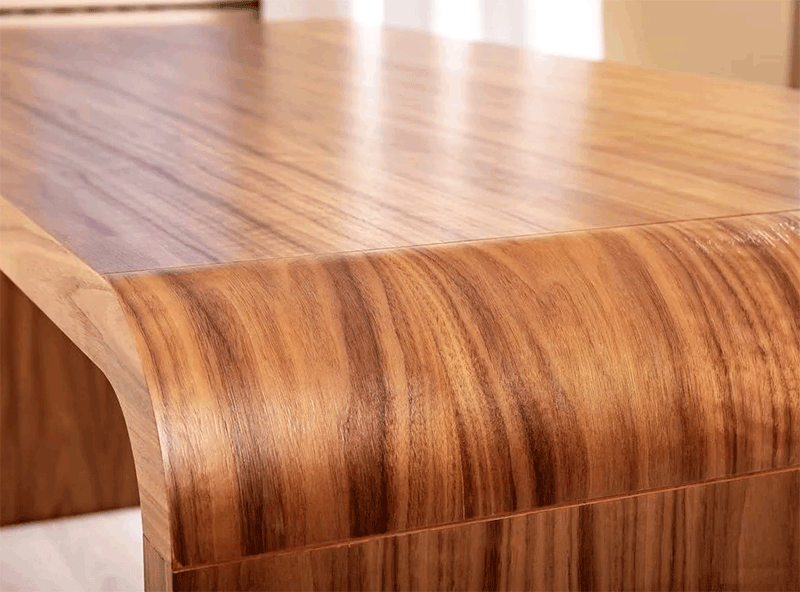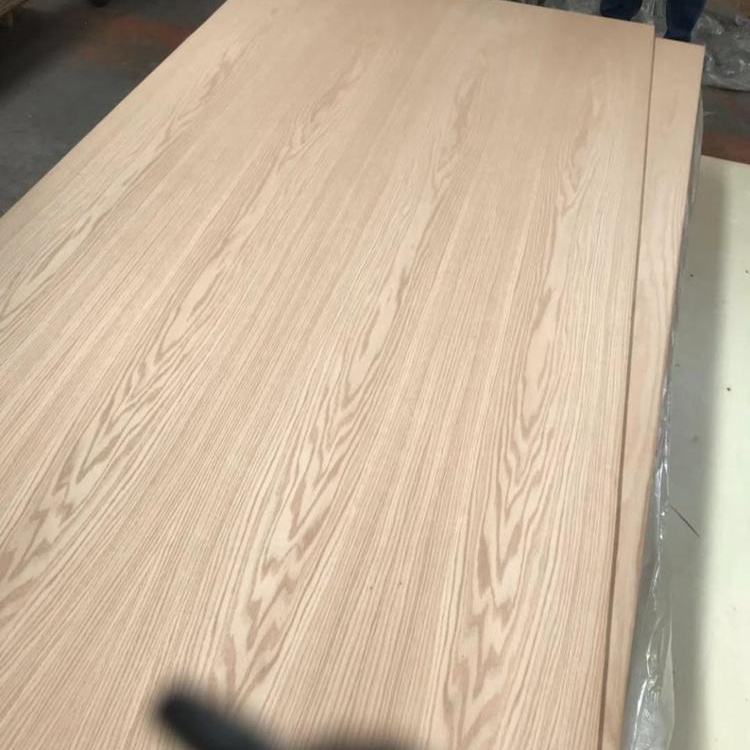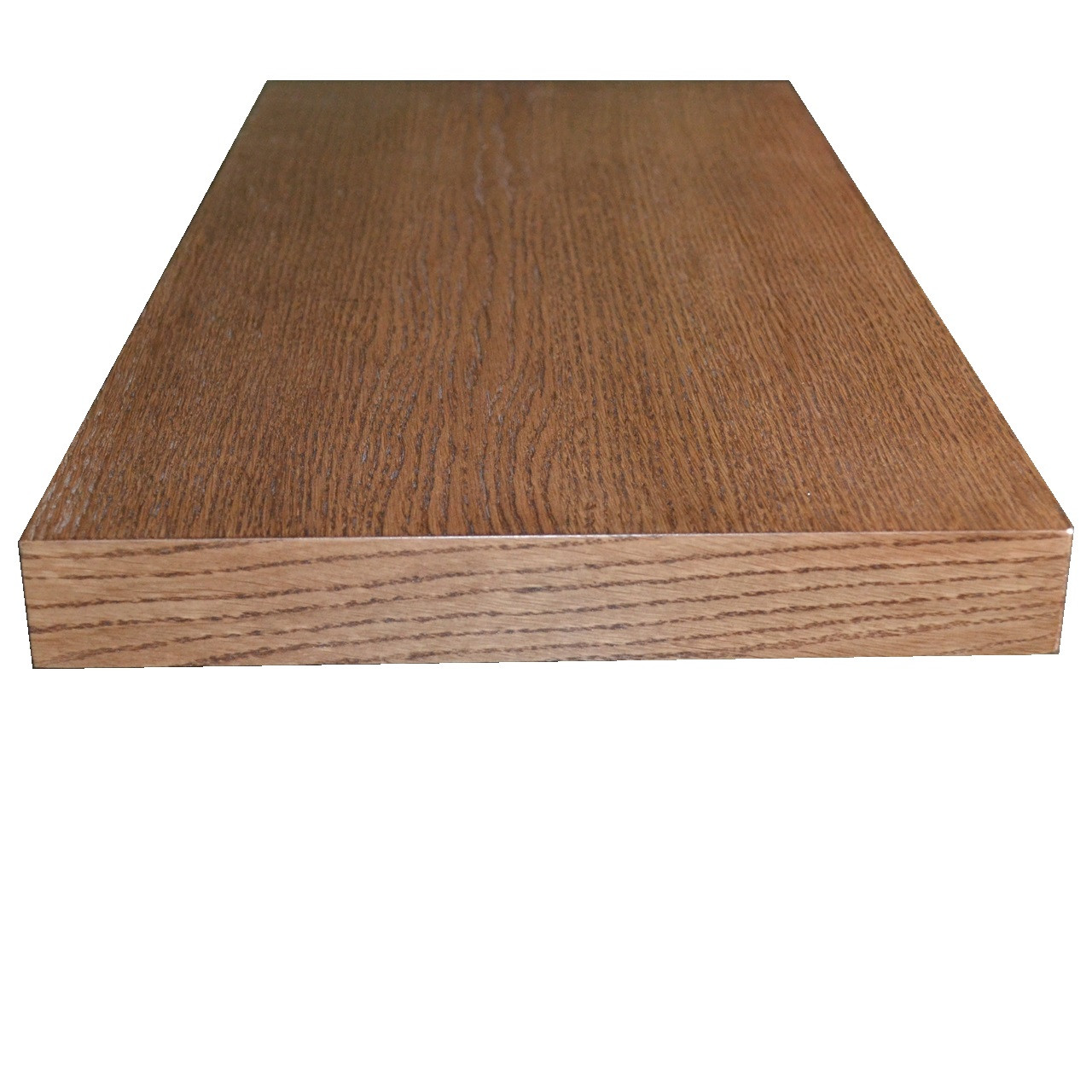Applications
Veneered plywood is an environmentally friendly material, therefore it is used for cladding interiors, framing countertops, in the production of wooden stairs, in the manufacture of doors and many other options. Plywood has a solid base, and with veneers you can achieve excellent durability, natural colors and wood grain. Due to its inexpensive cost and attractive appearance, it has found wide application in the production of furniture. In this case, it must have security. Usually it is FK plywood, which is produced on the basis of urea glue. For furniture use veneer from birch, as it has the best strength characteristics.
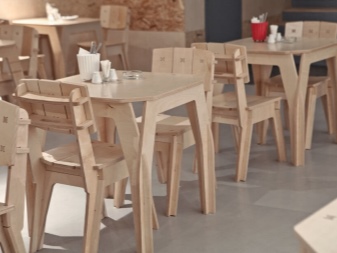
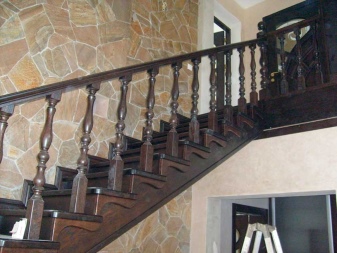
And also veneered plywood is used in construction to create temporary structures and formwork, for foundations, decorative panels, which are necessary for sound insulation, for cladding lecture halls, special offices, sales rooms, equipment for playgrounds. In the automotive industry, it is used for covering floors and truck bodies, covering car dealerships, making trailers, and interior decoration of yachts. With its help, decorative boxes, beautiful elements for packaging are created, it is used in the arrangement of shops, to create equipment for hotels, furniture for cafes and restaurants, hairdressers and other types of business. Cheap varieties are used to create billboards and car signs on the roads.
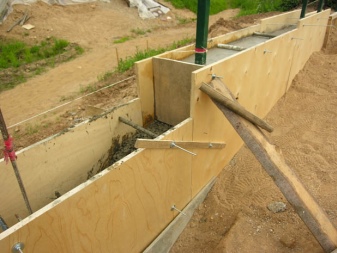
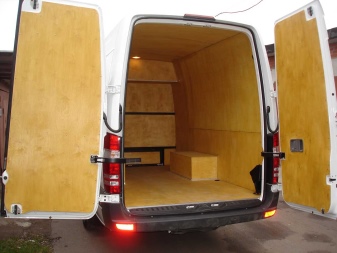
For an overview of veneered plywood, see the following video.
What it is?
Plywood itself is a material that consists of particles of natural wood glued together. Despite its natural origin, in its original form, plywood does not have any attractive appearance and is made from the cheapest types of wood. In order for it to acquire a beautiful appearance and be in demand among manufacturers, it is ennobled.
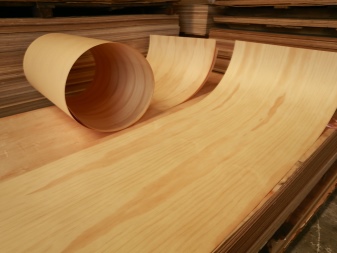
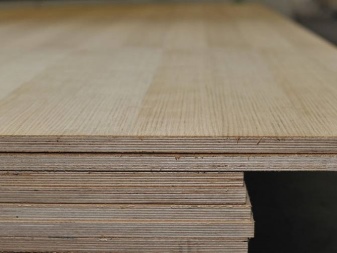
Veneer is a thin layer of natural wood that is glued to the surface of plywood and makes it decorative and in demand. It differs in the way it is produced. It can be of several types.
- Sawn is the most expensive and high-quality, since a lot of waste is obtained in the process of its manufacture. Initially, valuable types of wood were used for this species, but due to the already expensive cost of production, technologies are now based on inexpensive wood to make the price of the species more affordable.
- Sliced is the cheapest option. It is made from the most popular coniferous and deciduous wood species. The veneer has a thickness of 0.2–5 mm. The technology of manufacturing burl wood veneer is used, which gives an original texture and a beautiful pattern.
- For the production of rotary cut veneer, soft types of wood are used, such as birch, oak, pine and others. Manufacturing technology is based on cutting a thin layer from a round log in the form of a tape. Such veneer is very high quality and irreplaceable in the manufacture of products with a large area, but it does not differ in decorative qualities.

The veneer plywood manufacturing technology is rather complicated. Plywood is cleaned of dust. Then a special urea-formaldehyde glue is applied to it. They treat the surface on both sides. The veneer is placed so that the pattern of independent "shirts" clearly lies with each other. After that, plywood with veneer is determined in a special vacuum or hot press for pressing, after which it is subjected to final processing - this is trimming, cutting and grinding.
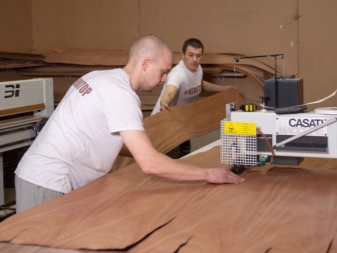
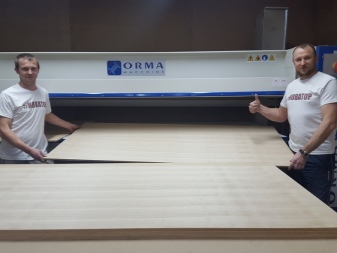
According to the functionality, veneered plywood is divided into two types:
- furniture lumber with a beautiful appearance and easily amenable to mechanical processing;
- construction plywood made of thickened veneer with good strength and wear resistance. It is used only as a cladding and construction material.
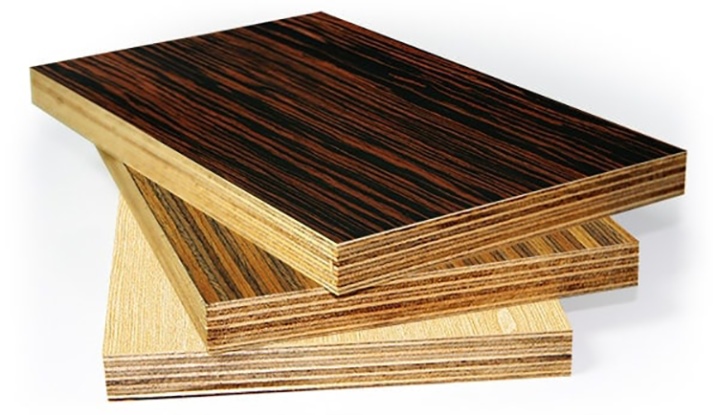
Finished veneer plywood, depending on the selected type of coating, can be of different grades.
- Grade B is the tallest and most expensive. It can be coated with clear varnish. It is used to create furniture, interior decoration and toys.
- Grade S is in between B and BB. It must be varnished and painted. It is used to create furniture and interiors.
- BB grade. Small knots are allowed in it, and there is also a slight discoloration. It must be painted and varnished. It is used for the production of furniture and transport.
- In grade CP, discoloration is allowed, there may be insertion elements, synthetic putties are used, there may be small cracks. The grade is the cheapest; it is used for structural cladding in the manufacture of furniture and various types of packaging.
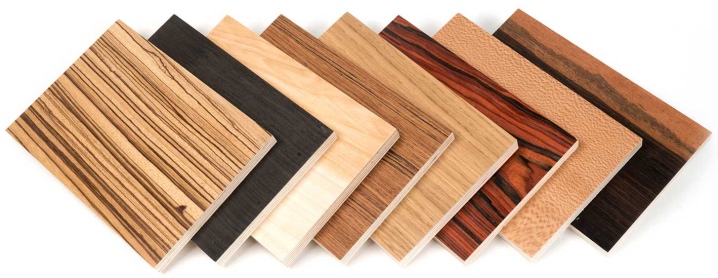
Veneer veneering technology
In our production we use hot-pressed veneer (for flat parts). The veneer and base are connected using high pressure (up to 250 atm) and temperature (up to 120 degrees). ? Used with this technology, the adhesive resin is exactly the same as the resin used in the production of chipboard and MDF, due to which the veneer and the base become a single whole. The use of resin is irreversible, that is, it is no longer possible to peel off the veneer from the base after high-quality veneering. The equipment of the Italian company "OrmaMachine", used by us in production, allows us to stably and guaranteed to produce a high-quality pressing process.
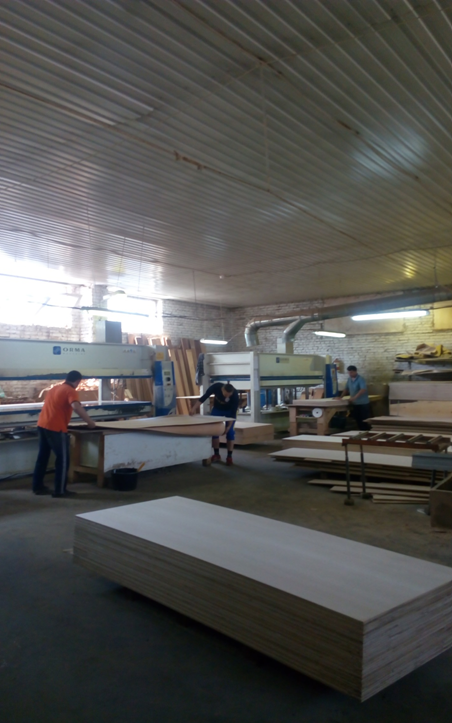
Depending on the purposes for which plywood is produced, it can be single-sided or double-sided.
Single-sided veneering - possible only for parts that will later be glued or rigidly attached to some kind of base. In this case, the bending of the part after one-sided veneering can be removed. And if you veneer plate materials on one side, they will warp.
Double-sided veneering - technologically correct, because the parts are glued on both sides at the same time, which does not cause deformation, but it is associated with additional costs. If the design of the product allows, then it is possible to replace the expensive veneer of the reverse side with a cheaper one, the so-called compensator. On thick substrates (from 16mm and above), it is even possible to use thick paper as a compensator. As a rule, this is enough to prevent the detail from leading.
Bonding methods
The quality of the veneer material and its strength directly depend on how accurately and accurately the veneer is glued to the plywood blank. There are 3 types of veneer fixing methods.
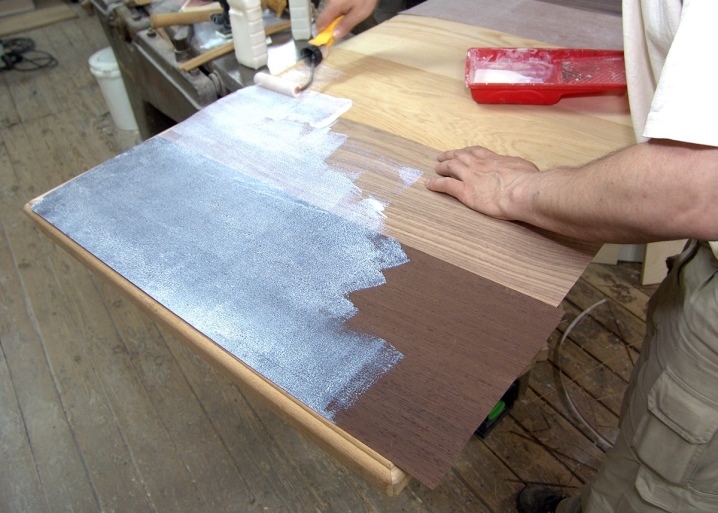
Cold contact method
This is considered to be the most difficult way to perform veneer gluing. For its implementation, an adhesive composition is used, which is able to quickly polymerize. This solidification rate has its pros and cons. The fact is that due to the fast adhesion, defects in the location of the veneer on the workpiece may not be noticed and corrected in time, and after polymerization, it is no longer possible to change anything.
For this purpose, the workpiece is placed under a special pressing press, or press it manually. In this way, it is recommended to process workpieces that are small in size.
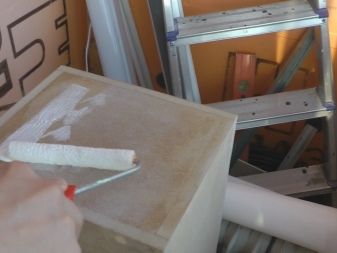
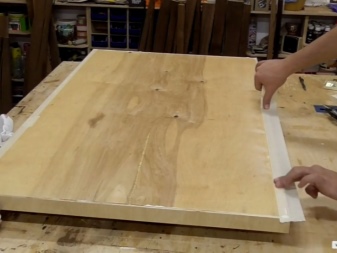
Hot glue method
The essence of this method is that the surface of the workpiece and the surface of the veneer are separately processed with glue. The adhesive composition should dry out a little, after which the veneer is applied to the workpiece.Next, the veneered surface is treated with a hot press or iron, if the work is done at home. In order not to spoil the finish, iron the veneer through a layer of clean paper. At this time, under the influence of high temperature, the adhesive composition will melt and create high adhesion.
To perform this finishing method, a thick adhesive composition is used. In the event of air bubbles or unevenness during the gluing of materials, the situation can be corrected. The adhesive composition, which in the form of surplus has left the workpiece, is removed with a damp cloth.
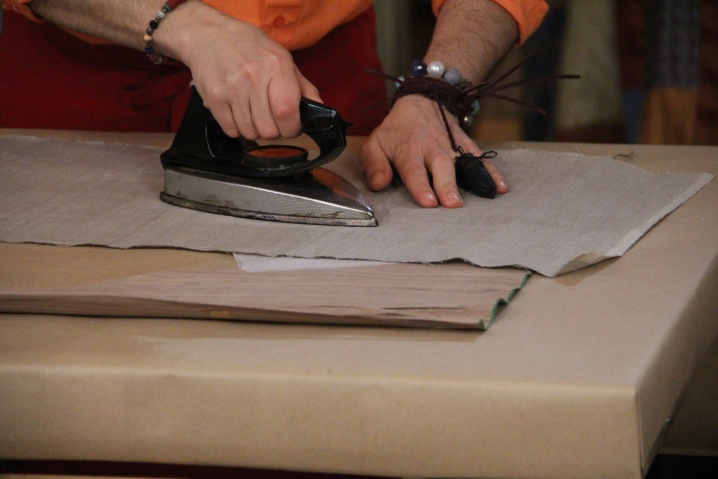
Cold jointing method with pressing
The method is based on the use of squeezing devices called clamps. Compression of the bonded surfaces is carried out until the glue is completely polymerized.
Choosing one or another type of veneering, it is important to perform the subsequent stages of work. After the glue dries, I grind the workpiece a little and cover it with a transparent quick-drying varnish
Already 24 hours after veneering, the product can be used.
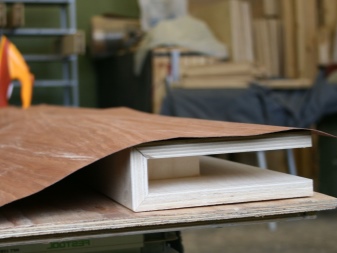
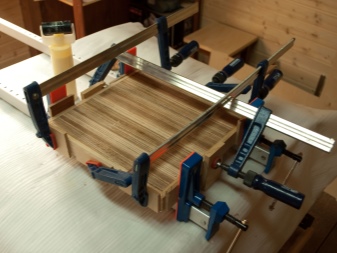
Choice of materials
In the production of veneered materials, the types of products are subdivided depending on the raw materials used, natural species of wood.
Ash veneered material
The structure of this wood has light tones and a subtle natural pattern. Ash veneer is good because it has elasticity and rarely splits. Ash veneer thickness ranges from 0.5 to 0.6 mm. Ash is resistant to sudden changes in temperature conditions and does not react to this by splitting.
Ash veneered lumber is used for the manufacture of door panels, parquet, in furniture production (cabinet furniture facades and much more). Ash veneered plywood is often used for indoor wall cladding.
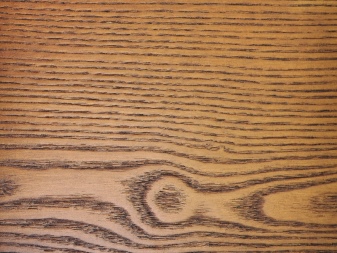
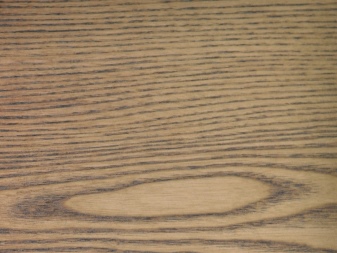
Material veneered with oak
It has a bright and rich tone, as well as a strongly pronounced woody pattern. The veneer texture has high reliability and long-term operational capabilities. The thickness of oak veneer can be from 0.3 to 0.6 mm. Materials that are veneered with oak veneer are not as flexible, but very durable.
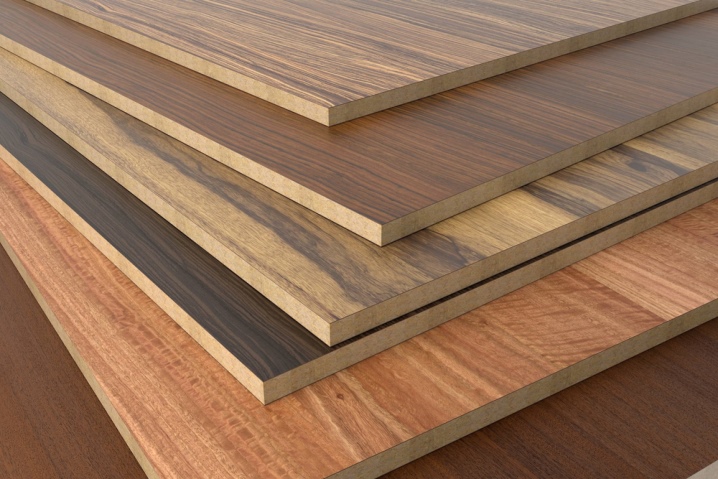
In addition to high-quality veneer, an adhesive composition is required for the plywood veneering process. Its characteristics depend on the thickness of the facing lumber and its properties. In order to carry out the veneering process with your own hands, you can use wood glue or PVA composition. It should be noted that these types of adhesives are only suitable if the work surface of the product is well sanded. For complex parts with protrusions and fanciful shapes, you will need a glue of a stronger composition and a high degree of adhesion. For this purpose, polyurethane compounds are used, for example, Kleiberit or Titebond glue.
After the front part of the workpiece is pasted over with veneer, it is necessary to glue the material along its edges. This crucial step is performed with even more durable types of adhesives. For example, an epoxy resin or an adhesive containing it can be used as such a means.
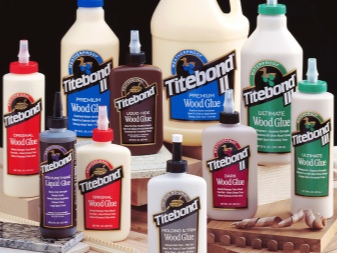
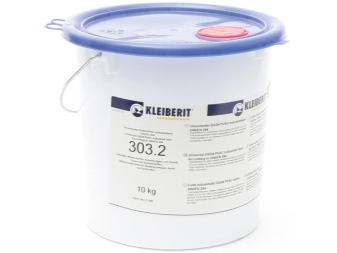
Overview of types of veneered plywood
Veneered plywood is divided into several types, corresponding to the type of wood raw material.
Oak
Oak veneered plywood is the most sought-after option for modern interior design and furniture creation. It has rich shades of brown, a positive texture and a particularly increased porosity. This type has low flexibility, high strength, and the thickness of the natural coating ranges from 0.3 mm to 0.6 mm. The production is based on moisture-resistant birch plywood. Plates are obtained by hot pressing.
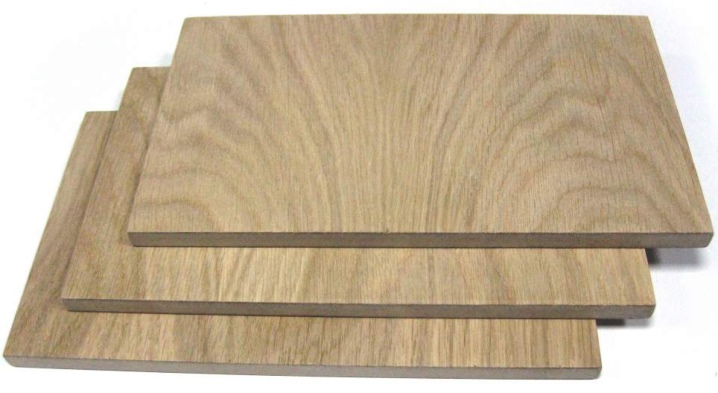
Ash
Ash veneered plywood has a slightly pronounced pattern, which is usually dominated by a light brown color with a slight brown or olive tint. The color transition is very weak and blurry.The texture is pronounced as its natural wood contains imposing vessels. The material requires staining, after which the pattern becomes very contrasting. This type is very flexible, does not form cracks during temperature fluctuations. The sheet thickness is 4 mm or more with a veneer thickness of 0.5 mm.
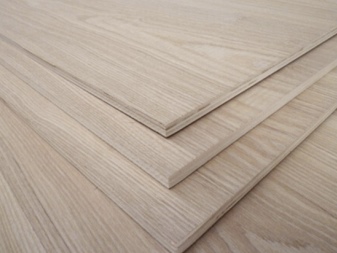
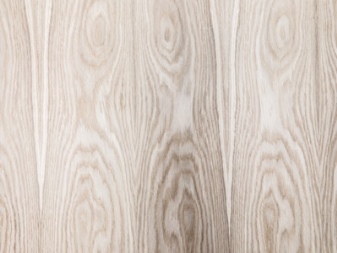
Bukom
Beech veneered plywood is characterized by a white surface with a yellowish-red tint, which can change over time to a pink-brown hue. The material is not resistant to moisture, since beech has a hygroscopic structure. To connect the seams, a special moisture-resistant glue is used, which increases the moisture resistance when the board gets wet. The fibers are arranged perpendicularly, which prevents the sheet from twisting.
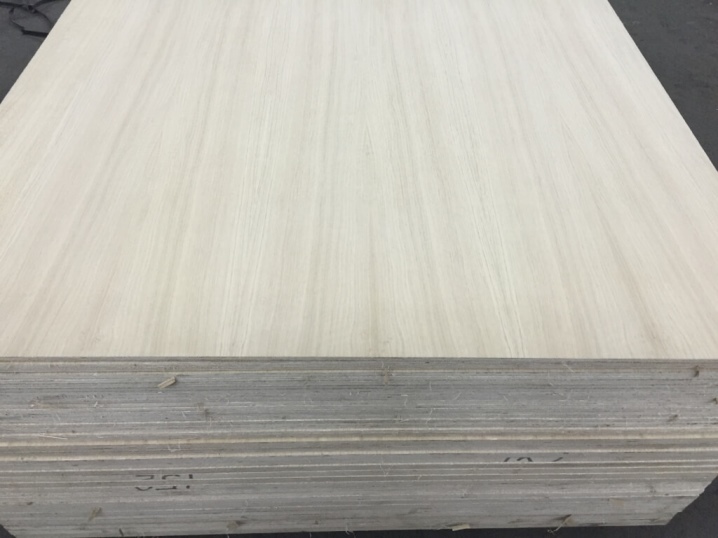
Formats and cost:
| Prices for veneering of all types of veneer, see here Full price list in Excel format (36 Kb) |
|
(prices are indicated in rubles per square meter for standard panels) |
|---|
| Formats | Veneer | Beech | European oak AM * | European oak AB ** | European oak AA *** | Ash white AB** | Ash white AA *** | Far Eastern ash | anegri | Birch | |
|---|---|---|---|---|---|---|---|---|---|---|---|
| ДСП-16 | 2440*600 2440*910 2800*686 2800*1032 | one-sided. | 722 | 785 | 785 | 785 | 757 | 757 | 778 | 974 | 1016 |
| two-sided. | 953 | 967 | 1023 | 1079 | 960 | 1023 | 1065 | 1457 | 1541 | ||
| ДСП-25 | 2800*1032 2800*686 | one-sided. | 838 | 901 | 901 | 901 | 873 | 873 | 894 | 1090 | 1132 |
| two-sided. | 1069 | 1083 | 1139 | 1195 | 1076 | 1139 | 1181 | 1573 | 1657 |
A characteristic feature of our products is the huge range of application possibilities. You can order chipboard boards of various sizes from us, which will make it possible to translate into reality projects of any purpose and level of complexity.
When ordering slabs, you can use standard sizes or provide your own sizes.
Most frequently ordered sizes:
| Veneered chipboard16 mm | 2440×910 | 2440×600 | 2800×686 | 2800×1032 |
Production
Our company has its own production facilities, where modern equipment is installed and a staff of qualified specialists is selected. We carefully control every stage of production, ensuring the flawless aesthetic and performance characteristics of our products.
Veneered chipboard consists of 3 layers:
- natural veneer (valuable wood species);
- adhesive composition (urea-formaldehyde or PVA-based);
- a sheet of chipboard (chipboard).
During production, we observe all the nuances of the technological process, paying close attention to each stage:
5 reasons in favor of purchasing chipboard:
If, according to technical conditions, you need a moisture-resistant or non-combustible material, then we use a special chipboard with impregnation, which makes it possible to manufacture waterproof or non-combustible panels.
How to veneer?
You can glue the veneer on plywood at home with your own hands.
Sticking of finishing lumber is carried out after a certain cycle of preparatory work.

Preparation
Furniture facades or interior doors must be dismantled, all decorative elements and metal fittings removed from them. Before you start gluing the veneer, you need to prepare your workplace. It is most convenient to do this on a carpentry table, or install old chairs as an impromptu platform.
When the workpiece is freed from all the elements, they begin to clean it. It is necessary to remove the layer of the old varnish. It is removed with a thin metal spatula, and you can also use the hot air jet of a construction hair dryer. If the workpiece is new and made of soft coniferous trees, irregularities in the form of knots or drops of protruding resin must be cleaned.
The next stage of work will be the performance of high-quality surface grinding. If there are potholes or cracks, they are putty with a compound containing the components of wood glue. After sanding, the surface must be primed before applying the adhesive.
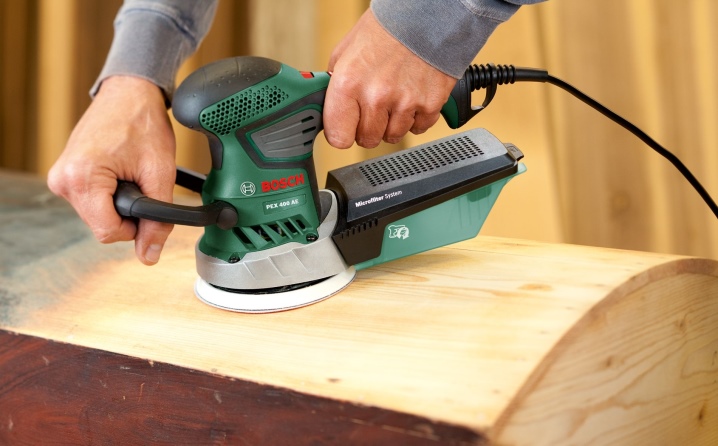
Cut open
In the retail network, veneer can be purchased in the form of sheets rolled into rolls. Before cutting them, the lumber must be straightened. To do this, the roll is rolled out on the floor and moistened with a cloth moistened with water.Next, a sheet of plywood or drywall is applied over the lumber, pressing them on top with some heavy object. It will take time for the veneer sheets to align - only then can they be cut. This procedure is done as follows:
- the surface of the workpiece is measured;
- the dimensions obtained are marked on a veneer sheet, while on each side an additional 5 cm is put aside in the stock in case of an incorrect measurement;
- according to the intended dimensions, a part is cut out of veneer with a special plywood knife or a submersible saw (scissors are used only as a last resort, since their use can lead to cracking of the canvas).
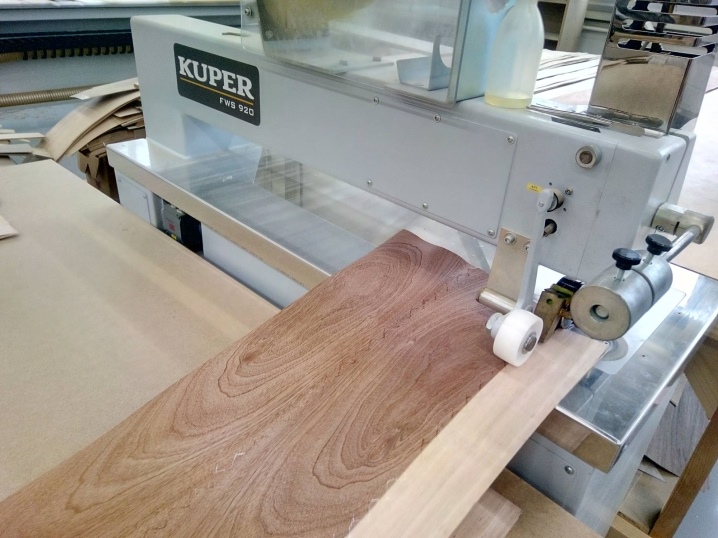
To make the wood grain pattern look the most natural, it is carefully selected. The connected canvas is made with allowances from a given size by 5-7 cm.
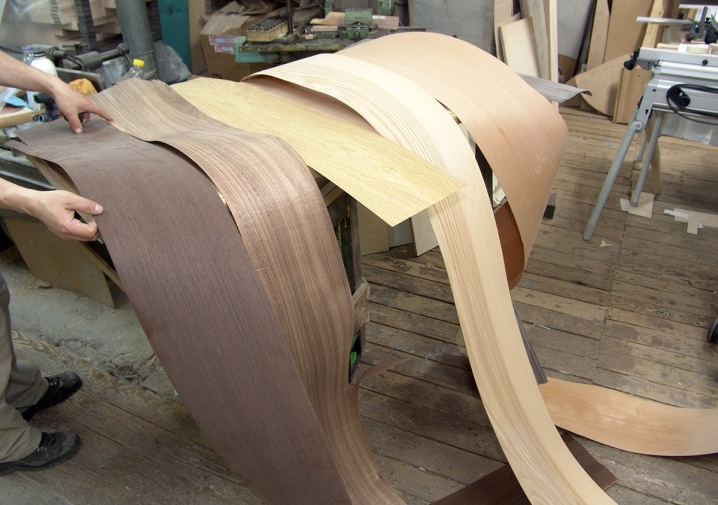
Veneering
At this stage, it is important to evenly glue the workpiece in the chosen way. Prepare glue, brush, cloth, clean paper and iron for work
The veneer is turned upside down and fixed at the corners with clamps, after which the adhesive is applied. And also the prepared workpiece is processed with glue. Next, the veneer is glued to the workpiece, avoiding distortion of the material and bubbles. After gluing and eliminating small errors, paper is applied to the surface of the part and passes through the material from the center to the edges with an iron, pressing it with force. After the front part is finished, the excess material is trimmed with a sharp knife. Then, the end parts of the workpiece are lined with narrower veneer strips.
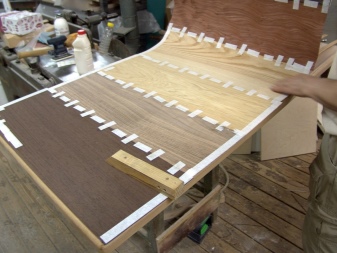
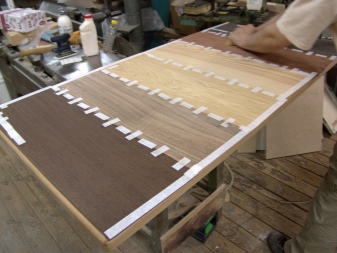
When the glue is completely dry, the edges of the cladding are cleaned with fine emery paper or with a file, depending on the thickness of the material. After finishing the work, the product must be covered with nitro varnish.
How to veneer plywood at home, see below.
Varieties
Veneered furniture is made from materials of different quality and production method. The price category of furniture depends on the type of veneer. There are the following types of veneer, natural origin, used for the production of furniture:
- shelled;
- planed;
- sawn.
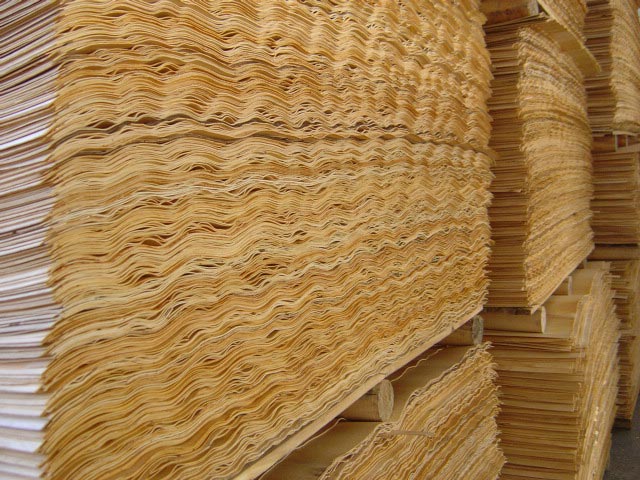 Shelled
Shelled
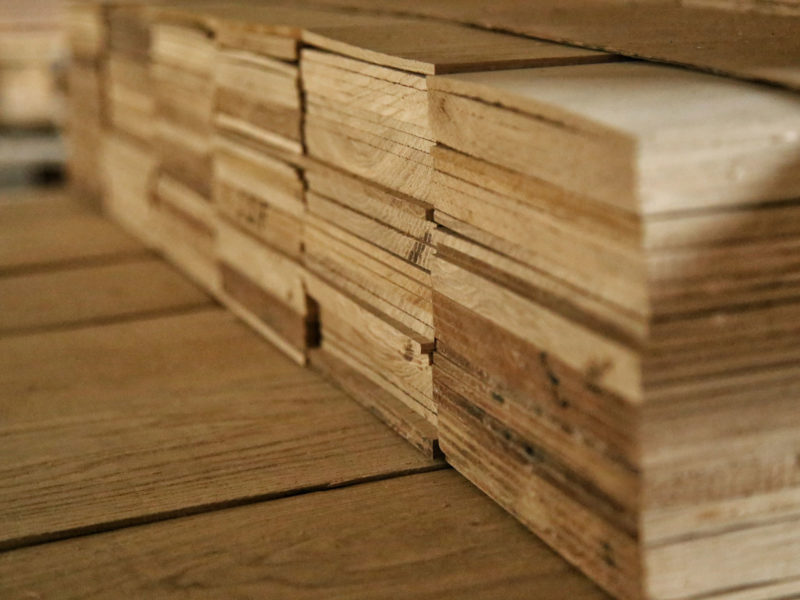 Sawn
Sawn
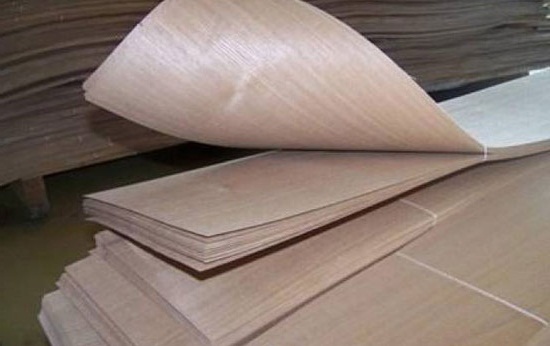 Planed
Planed
Natural rotary cut veneer is the most common and available type of veneer, with a thickness of 0.1 to 10 mm. Depending on the quality of the wood, compliance with the production technology, such veneer may not be inferior to planed veneer. It retains the natural texture, unique pattern of wood, and has excellent aesthetic qualities.
Sliced veneer is mainly used in furniture production. Valuable types of wood are used in its production. It is characterized by the richness and variety of patterns, textures, which are achieved due to the method of production. The wood blank can be planed in different directions, at different angles, achieving unique, original natural patterns.
Sawn veneer is the first type of material that began to be produced back in the 19th century. It is of high quality and is not cheap. Today it is not made on an industrial scale, it is used to create musical instruments, inlays, interior decoration, expensive parquet floors and single sets of furniture to order.
Modern varieties of veneer, subspecies of natural material, include:
- multi-veneer;
- fan-line.
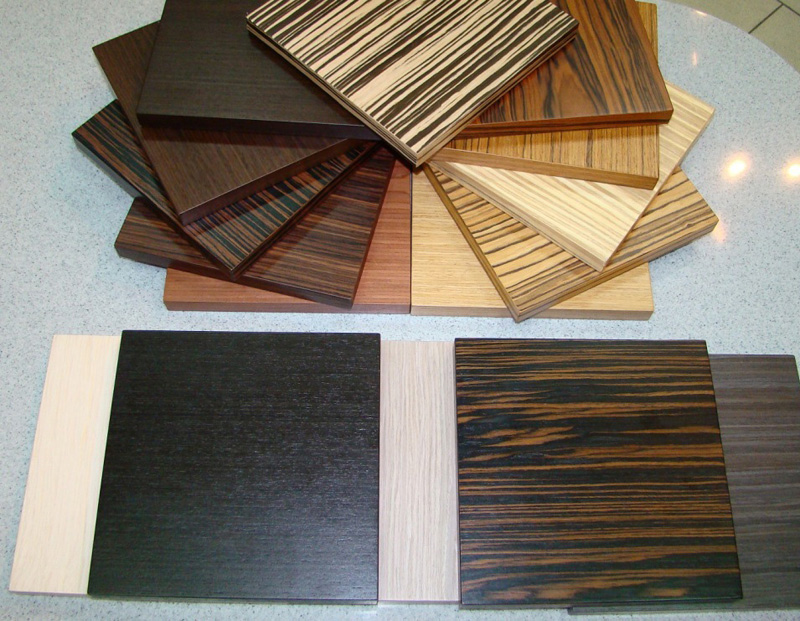 Multi-veneer
Multi-veneer
 Fan-line
Fan-line
The multi-veneer is made from natural wood of various species, while not aiming at preserving the natural pattern. This type of material is endless in its colors, textures, and has a palette of rich woody patterns. Geometric shapes or any other design pattern can be depicted on its surface.
Fine-line is made from inexpensive species of fast-growing trees, using several technological combinations:
- peeling and drying;
- painting and gluing;
- pressing and secondary planing or peeling.
The sequence of the above actions allows you to create a material of the required texture, pattern, structure and color. Fine-line often imitates natural veneer of expensive types of wood. This type is less durable, has increased fragility, porosity.


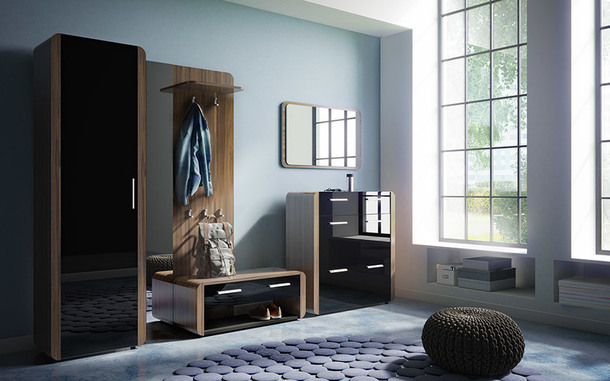


News.
15.02.20
New - TSS eco-boards Cleaf
07.12.19
New super matt and glossy Fundermax panels
25.02.18
New Egger decors
15.10.17
There is a new decor Ultra High Gloss Fascino Retro Lucido gray
23.11.16
Favorable delivery in Moscow and Moscow region with payment upon receipt, for details see "Delivery and payment"
01.12.15
The warehouse program includes PVC edging made in Russia: 1x19.1x26.1x29 mm.
08.10.15
Due to the 5% increase in prices for the Egger manufacturing company, we are forced to change our price list.
01.10.15
In addition to sanded MDF, the warehouse program includes MDF laminated on one and two sides.
18.08.15
Due to the appreciation of the exchange rate, we are forced to raise prices for the following items:
PVC edge China, rattang, bamboo.
Now + 15%.
20.02.15
We have entered into a long-term contract with Hize Hungary.
Veneered edging of different types of wood is now in our warehouse.
Our customers have already appreciated the high quality of the edging from the first trial batch.
There are 21 items in the warehouse and more than 120,000 running meters.
10/29/14 Dear Clients!
Due to the significant increase in the euro exchange rate, from November 10, we are forced to raise prices.
16.01.14
We now have Ultra High Gloss panels. More about Ultra High Gloss
25.04.13
Dear Clients! Naturwood is pleased to inform you that in Rostov-on-Don we have a branch where you can buy chipboard and MDF veneered, laminated chipboard of Egger Company. View contacts
12.11.12
We have an exclusive veneered wall profile! At the heart of three types of aluminum profiles - end, corner and connecting, faced with oak veneer. More about profile
26.09.12
NEW! Naturwood has expanded the range of MDF profiles. Now in our warehouse program there are: a front plate, a plate on the table top, an end plate, a base / plinth and two types of cornices.
For dimensions and designs, see here. Check the prices by phone.
20.01.11
New !!! We now have flexible veneer and tamburat.
07.10.09
We cooperate with the School of Renovation at TNT and have made furniture from laminated chipboard high gloss Read more >>
29.09.09
Attention! Our address has changed! Our new address: st. Khachaturyan d
12 bldg. 2More >>
07.09.09
Now in our warehouse program MDF Oak 6 mm.
16.06.09
Our product range now includes a veneered frame profile for the production of furniture facades.More >>
14.06.09
We are expanding our assortment! High Quality Character Wood Veneer AppearedRead More >>
09.02.09
Our assortment now includes glossy chipboard for furniture productionMore >>
The range of chipboard and MDF has been expanded:
Chipboard Ash 26 mm and MDF Ash 9 and 19 mm More >>
In the modern interior, veneered wall panels have taken a worthy, if not the main, place. Style, quality, environmental friendliness make their use the most preferable.
- The appearance of the lined wall acquires a more attractive appearance, the uniqueness of the pattern due to natural veneer.
- The use of veneer wall panels in combination with natural wood furniture gives the room a prestigious and solid look.
- Wall panels are made of high quality materials of European production. Various types of varnishes are used for finishing veneered panels - glossy or semi-matt varnishes, with any tinting - standard or customized.
- Veneered panels are also used in furniture manufacturing, including children's furniture and playgrounds, facade structures, cabinet walls, upholstered furniture cases, bathroom furniture, tables and countertops, shelves and cabinets, kitchen furniture, shelving and partitions. In addition, veneered wall panels are an indispensable material for creating commercial, service and warehouse equipment for tents, racks, counters, and billboards.
European manufacturers have long understood that it makes no sense to veneer (veneer) the board themselves, because this is an extremely time-consuming and technically complex operation, which leaves a lot of scrap and waste.It's easier to buy a finished product of the highest quality: cut, varnish and make great furniture. You do not need to wait for the material to be pasted on. We always have it, which saves time.
We invite you to try all the charm of this approach, since we always have in stock a constant assortment of boards of excellent quality and very convenient size: 2, 8 * 2.06, covered with veneer of the most popular types of wood.
• delivery • cutting • an assortment of edging.
Do you have a large order?
Do you want to get special conditions?
Send information about you and your order directly to the director
Selection and care tips
When choosing veneered furniture, the following main criteria matter:
- price;
- environmental friendliness;
- durability and wear resistance;
- aesthetic qualities;
- maintainability.
An important point is the design of the room. Modern artificial materials are perfect for the embodiment of bold design projects, providing an endless range of shades, textures, patterns. Natural material is perfect for classic room designs, combining the beauty of natural wood and environmental friendliness of natural materials.
It is enough to wipe such surfaces with a cotton rag using a soapy solution. Artificial counterparts are not so capricious in their care. But it is necessary to use cleaning agents without abrasives, alkalis, solvents.
Differences between artificial and natural material
What is the difference between fine-line veneer, multi-veneer, eco-veneer and natural planed material? The main differences between artificial and natural veneer:
- all sheets of artificial material of a particular article will have an exact match of color, texture, picture. This makes it possible to make products perfect in color, without inclusions, knots, with a complete coincidence of wood patterns. Artificial veneer sheets are interchangeable, so such products can be easily repaired or supplemented with other furniture, while the color match will be perfect;
- when veneering furniture with natural material, additional steps are required to select a pattern and color. Each product will be individually in texture and color, there may be a discrepancy between the shades of the same veneer article;
- furniture made from natural veneer looks great, such products visually, practically, do not differ from furniture made from natural solid wood;
- natural veneer has durability, high wear resistance;
- a modern artificial analogue - eco-veneer, it is much cheaper than natural veneer, it is based on polypropylene, which is more environmentally friendly, unlike PVC, does not emit harmful formaldehydes, phenols;
- eco-veneer is resistant to various chemical cleaning agents, which greatly facilitates the care of such veneer furniture.

